Story of the J-Class Yachts:
The J-Class was adopted for America's Cup competition in 1928, looking forward to the next regatta in 1930. The Class itself, though, dated back to the turn of the century when the Universal Rule was adopted though no J-Class yachts had yet been built.
The Rule used a yacht's various dimensions to calculate an equivalent rating in feet. Boats of equal rated lengths could then race against each other directly without making other allowances for time or distance sailed. Even though one yacht might have a longer length or another yacht a larger sail area, their overall configurations had to produce a rated length that met the Universal Rule for that class. Boats in Class J, more commonly today termed J-Class yachts, were the largest constructed under the Universal Rule. The Rule actually includes provisions for an even larger type of boat, the I Class, though none were ever built. Inquiries made in the 1930s for a Defense in the smaller K Class were rejected.
The J-Class were the first yachts in an America's Cup match to be governed by a formal design rule. Previous defenders and challengers were only restricted by minimum and maximum lengths set forth in the Deed of Gift. Sir Thomas Lipton, challenging in 1930 for the fifth time, had held earlier discussions with the New York Yacht Club in hopes of adopting the Universal Rule for the previous America's Cup match, intended for 1914 but delayed until 1920. Though an agreement to use the rule was not reached for that match, the 1914 US boats, Vanitie and Resolute, still roughly followed J-Class parameters.
Building Program:
There were only 10 J-class yachts designed and built. Additionally, several yachts of closely related dimensions, mostly 23-Meter International Rule boats, were converted after their construction to meet the rating rules of the J-Class.
Only the purpose-built Cup yachts, though, could compete in the America's Cup. The "converted" J-Class yachts, while acceptable for Class racing events, were not admissible for America's Cup competition. Responding to issues that surfaced in earlier defenses, the America's Cup rules required that all boats had to be sailed to the event on their own bottom. Some critics pointed out the possibility that the challenger might, as a result, be disadvantaged by being of heavier construction than the defender. In order to avoid a situation that could be perceived as an undue advantage, the NYYC eventually agreed that all America's Cup J-Class yachts would be built to Lloyds A1 standards, ensuring that defender and challenger met the same minimum construction specifications (the nautical term is "scantlings"). Most existing yachts were not built to such standards, so the Cup-eligible boats thus ended up heavier than the ineligible J's.
(The issue of challengers having to build heavier boats due to the ocean crossing was a popular, if uncertain, explanation in the British press for the long string of American victories. In practice, a number of challengers added internal bracing for the crossing, which was then removed before racing. And on a few occasions defenders subsequently made the crossing in reverse in search of competition following their successful defense. The rule requiring that the challenger sail to the event on her own bottom was actually instituted in response to a super-lightweight challenger towed to the match through canals and rivers from Canada.
The J-Class Yachts
Disposition:
Conceived at the height of the affluent 1920's, the J-boats arrived during the Great Depression. They required enormous crews, and, despite expert attention to their technical details, still broke an astonishing number of masts. While they were in most regards the most advanced sailing yachts yet built, and they were indeed powerful sailing thoroughbreds formed in sleek lines that can race the pulse of almost every viewer, the glorious J's proved too extravagant for their own good. Most had very limited sailing careers outside of America's Cup. Ranger , whose 1937 cost was upwards of $500,000, was laid-up at the end of her debut season and never sailed again. All of the American J's were scrapped between 1935 and 1941. Most of the British J's were either abandoned or scrapped.
When NYYC sought to revive the America's Cup in the 1950s, there was a faction that favored returning to the J-Class. Mike Vanderbilt even stated that not only would he like to see the Cup contested in the large boats, but that if so he would consider rebuilding a new Range r to the design of the original. Still, another faction hoped for smaller dual-use yachts that could be used in offshore racing when the Cup year was ended. With cost estimates for a 1958-era J starting around three million dollars, the impulse for a J-Class defense faded away in the face of economic pressures and a compromise was reached to sail the America's Cup in International Rule 12-Meters.
The J-Class Resurgent
J-Class rigs today are no longer built of wood or dur-alumin, but with modern lightweight composites. Their sail technology is long past being canvas duck, and many other subtle changes have been made to make the ongoing maintenance and operation of these yachts a realistic proposition. Still, the J-Class owners have gone to great lengths to insure the integrity of the boats. The J-Class is self-administered, rather than governed by an outside organization as is the case with almost all other classes. This allows the members to more easily adapt the rules in order to serve the needs of these uniquely historic yachts.
Most of the surviving J's are available for charter. Cambria was reportedly for sale in 2000. Endeavour changed hands in 2006 for a reported $13.1 million USD, though as her former owner Dennis Kozlowski said, "No one truly owns Endeavour . She's a part of yachting history.''
Recreations, Replicas, and a Tender:
For decades, most yachting fans thought that we would never again see the likes of these boats again, the few survivors would sooner or later fade away, and the whole history would be reserved for books and fading photographs, but following the restoration of the surviving hulls rumors grew throughout the late 1990's and early 2000's about building "new" J's. In 2001, all of this dock talk began to become reality:
Ranger Wooden Boat magazine, March/April 2001, described a "Dutchman" who had commissioned a new Ranger built to the original's plan. This incredible rumor came true, and a piece of lost sailing history was brought back to life. The new version of this "Superboat", as Mike Vanderbilt once called her, was officially launched in October, 2003.
Designed by Studio Scanu and Reichel-Pugh, and built by Danish Yachts, Skagen, Denmark, she is not an exact replica of the original. Some would term her a re-interpretation, as a number of changes were made including greater freeboard, and Ranger 's original designers did not participate in the project. The new Ranger first competed head-to-head against other J's in Antigua, Spring, 2004. It took some additional adjustment after launch by her owners and designers to seek the proper trim that would make her float on her lines, an essential step in the process of being officially rated a J-Class yacht. Visit the Ranger Website for more info. J-Class Management is also at work on a restoration of Bystander, tender to the original Ranger .
Endeavour II An Endeavour II replica is being built at Royal Huisman Shipyard, with a planned 2008 launch date. Gerard Dykstra and Partners is leading the project, which features a lightweight Alustar (aluminum alloy) hull and carbon-fiber mast. See additional photo at Yachtspotter
Lionheart Based on an unbuilt alternate design by Starling Burgess and Olin Stephens II that was considered for 1937's America's Cup defender Ranger , this new boat is being built at yards in the Netherlands for an expected 2008 launch. Lionheart will be the longest J-Class yacht when completed. See more including photos of the completed hull at the Lionheart Website and the story of sailing onboard including photos and videos Cruising J-Class Style Aboard Lionheart at Yachting World Designer: Hoek Design Builders: Bloemsma Aluminiumbouw and Claasen Jachtbouw BV
Svea Tore Holm's unbuilt 1937 design, said by some to be faster in the test tank than any of the original boats, is being pursued by Hoek Design
Name To Be Announced In late March 2008, reports of another replica about to begin construction appeared on the Classic Boat website . Whether this is one of the known projects, such as Svea , above, or yet another replica about to become reality, such as Rainbow , below, should become known shortly.
Rainbow In late May, 2008, Dykstra and Partners announced that a new build of the 1934 America's Cup Defender Rainbow was underway, with an expected launch date of 2010. Read the Press Release
Other projects: Hoek Design is also studying replicas of 1930's Enterprise and another boat from Yankee designer Frank Paine. Yankee herself has also been rumored as a new project, as well. Earlier reports of a Ranger alternate-design carrying the name of Seawolf may have been referring to the project that has become Lionheart , see above. Whirlwind and Weetamoe are the only two designs of the original ten J's that aren't known to be sailing, building, or under serious consideration as of 2008. The J-Class website points out that there are 10 unbuilt J designs from the 1930's, so the possibilities for more J-Class yachts are intriguing.
Yachting World reported in May, 2003 , that construction was underway on a yacht replicating the famous G.L Watson design Britannia . Photos showed a nearly completed hull at Solombala Shipyard, in Arkhangel, Russia, and included interviews with the yacht's owner Sigurd Coates of Norway. The design was adapted by Cesil Stephansen from published plans. The original designer's modern descendent company, G.L.Watson & Co., Ltd., has no involvement with the Arkhangel boat. Little was been heard of this ambitious project for years, until the yacht was finally launched only to become subject of a financial dispute, trapping her in Russia until 2009, when she "escaped" to Norway.
In the Spirit
A similar project to return elegant yachts to competitive racing, the W-class, was set in motion by Donald Tofias, an American enthusiast. He commissioned naval architect Joel White to design a new class with lines evocative of famous racing yachts like the New York 50's and the J-Class. The first two boats, Wild Horses and White Wings , were built in Maine of modern cold-molded wood construction and launched in 1998. It is Tofias' aim that there will eventually be a whole fleet of the beautiful W-class to regularly compete against each other. The one-design W-76 is actually similar to the New York 50's. Tofias' long-range plans involve a range of classes including 46, 62, 76, 105, and 130. The 130's would be nearly identical in basic dimensions to the J-class. See the W-Class Websit e .
Additional Links: Chris Cameron onboard Ranger at Maxi Yacht Rolex Cup, 2010: Photo Gallery
Web Sites of Particular Interest: The J-Class Association J-Class Management, Inc.
Further Notes:
K-Class: The Royal London Yacht Club made and withdrew its inquiry for a K-Class challenge in 1935. The intent had been to reduce costs, not the least of which was hoped to be a lower velocity of mast replacement, but the K-Class line of thought was rejected for several reasons. For one, the K-Class wasn't so much smaller than the J-Class as to have clearly led to significant savings. Additionally, no K-Class yachts existed on either side of the Atlantic while several J's of various pedigree were available for testing, training, and racing in 1935. Also a factor was that the NYYC was already actively considering another challenge at the time the RLYC began their communication about the K-Class and it was the NYYC's policy to consider only one challenge at a time, in keeping with the Deed of Gift.
Sailing to the Event on Own Bottom: This provision of the Deed of Gift was at times strictly interpreted to the the degree of making sure that the challenging yacht actually was under her own sail while traveling to the match, not towed by another boat. Challengers returning across the Atlantic after Cup matches concluded were sometimes towed for convenience. Eventually the NYYC agreed at various times to permit towing the yachts to the match, particularly when conditions were light, and in 1956, for the coming of the 12-meter yachts in 1958, the Deed of Gift was amended to eliminate the requirement.
CupInfo Home

Yachting World
- Digital Edition

New J Class yacht named Topaz is launched – and the design team says she is “absolutely stunning”
- Elaine Bunting
- June 18, 2015
A new J Class yacht from a design by Frank Paine in 1935, J8, named Topaz has been launched in the Netherlands and joins a growing fleet of highly competitive Js

The latest J Class yacht, named Topaz, was launched from Holland Jachtbouw in June, bringing the total number of Js on the water to eight. From an unbuilt 1935 design by Frank Paine, designer of Yankee, J8 was researched and updated to the new rule by Andre Hoek. She is one of the longer ‘super Js’, with an 88ft original waterline length, a foot longer than any other J ever designed.
According to Hoek, the design ‘has the lowest wetted surface and highest keel aspect ratio of all Js. The design was then extensively optimised to perform under the J Class Association handicap system. Mast position, stability, sail area and hull stiffness were extensively researched. The hull structure was designed and augmented to take very high runner loads in order to reduce head stay sag.’
The design has a double cockpit, double deckhouse layout with the helm station amidships just forward of the aft deckhouse.
After sea trials, the new yacht will be handed over in July.
Hoek says the yacht and the quality of the build is “absolutely stunning”.
“The yard has done so much on the details, inside and outside. The 1930s interior will really wow people. It is macassar [ebony] in high gloss, with leather panels on the wall with stainless steel rims in between and straight-cut walnut floors. It looks really amazing.”
The launch of Topaz brings the J Class fleet on the water to eight boats.
Plans for J9 have also been developed by Hoek Design are ready to build from, and the hull of J11, a Swedish design named Svea, has been built at Claasen Shipyards in the Netherlands and there are discussions with several prospective owners.
Interest in the Js is at a high point because the Js will have a showcase regatta as part of the America’s Cup in Bermuda in 2017. The class boasts the only level-pegging boat-on-boat superyacht racing.

AMYA Boat Classes
Log in or Sign up
You are using an out of date browser. It may not display this or other websites correctly. You should upgrade or use an alternative browser .
J Class Yacht Design
Discussion in ' Boat Design ' started by Mattyb , Sep 19, 2017 .
Mattyb Junior Member
Hey guys, new to the form, and new to investigating the possibility of building my own boat. I have for the past few days been trying to find schematics for a J Class sailing Yacht in the 50ft range of size, for single handed sailing. Which leads to my first question, has anyone ever stumbled across such a thing? Preferably a fiberglass build. If not, any suggestions on which hull design program would be best to design a hull of this type that is not going to break the bank? I found some crude layouts of a few of the J class yachts, more or less want to use them for a basic design to build from, and adjust the scale.
gonzo Senior Member
J class boats are much longer than 50 feet. The smaller ones are about 120 feet. If you are worrying about not breaking the bank, this is not a viable project; unless you have a few million in that account.
Is there a particular reason why you couldn't take the overall design of the ship and downsize it? I understand the reason for the length of the J classes that are made now. But in the past they were made in significantly smaller lengths for different race classes.
PAR Yacht Designer/Builder
Welcome to the forum. Down sizing a little (say up to 15%) is safe, but more than this, and you need to reevaluate the design criteria. The J's were the playthings of the society classes and not anything remotely inexpensive. The class was folded because of the costs associated with their construction and operation. So, if you have literally 10's of millions laying around with nothing better to do . . . Now a 50' J class watanabe is possible. Have a look at the "W" class and see if it'll spark the same emotions. If so, I know of a 48' W class for sale, built in 2014 and a mere 1.2 million.
Dolfiman Senior Member
You can have a look at Hoek design and Leonardo yachts, specialised in "J class look" yachts, meaning Jclass overhangs, modern appendages inc. inverted T keel bulb : Hoek Design » Josephine II https://www.hoekdesign.com/yacht/josephine-ii . , a 36´ Leonardo Yachts - eagle36 http://www.leonardoyachts.com/en/eagle36.html Leonardo Yachts - eagle44 http://www.leonardoyachts.com/en/eagle44.html Leonardo Yachts - eagle54 http://www.leonardoyachts.com/en/eagle54.html .... and if you are a wealthy man : Hoek Design » Firefly https://www.hoekdesign.com/yacht/firefly1 , a 115´
dsigned O.R.C. Hunter
Mattyb said: ↑ Hey guys, new to the form, and new to investigating the possibility of building my own boat. I have for the past few days been trying to find schematics for a J Class sailing Yacht in the 50ft range of size, for single handed sailing. Which leads to my first question, has anyone ever stumbled across such a thing? Preferably a fiberglass build. If not, any suggestions on which hull design program would be best to design a hull of this type that is not going to break the bank? I found some crude layouts of a few of the J class yachts, more or less want to use them for a basic design to build from, and adjust the scale. Click to expand...
peter radclyffe Senior Member
heres one of the j classes I designed, it can be reduced in size Stern | Boat Design Net https://www.boatdesign.net/gallery/stern.23487/
CT249 Senior Member
Mattyb said: ↑ Is there a particular reason why you couldn't take the overall design of the ship and downsize it? I understand the reason for the length of the J classes that are made now. But in the past they were made in significantly smaller lengths for different race classes. Click to expand...
- Advertisement:
CloudDiver Senior Member
MattyB, the J Class yachts inspire many people... myself included. Without question we can agree they are the most beautiful yachts ever built. I would encourage you to look at the Universal Rule and understand the rating (wiki article is a good start; Universal rule - Wikipedia https://en.wikipedia.org/wiki/Universal_rule ) Some of the more seasoned designers or engineers here will correct me if I'm not using the right words here, but essentially to maximize the potential of the rating rule is why the J class yachts ended up so large and with so much sail area. For my limited ability in actual design but roughly understanding the principles, yes a J class can be scaled down BUT it could a) not look right, or b) not meet the Universal Rule. There were many other yachts built to the Universal Rule and they still have the look of a J. Google Larchmont O Class and you will see an example that is 60 ft LOA, 12 ft Beam and very pretty. If sticking to racing rules does not matter to you, and you are looking for the pleasing lines and emulating sheer beauty of the J class at a more realistic build/up-keep cost then you should look at classic designs in general. Try going to the Sparkman & Stephens blog and look at the design drawings in the 40-60ft range. The lower the design number the older the design... in the low design numbers you will find many beautiful examples of classic yachts will long overhangs fore and aft. Good luck finding what you are looking for! I have been doing the same thing for the last 5 years... no rush, I have learned a ton and it's far better reading than sitting through hours of brain-dead TV.
Scale J Boat J Class Yacht Ranger
I class yacht 53 metres.
Built 'to class'
Heritage Class Offshore Patrol Cutter Argus launched
Skinny Class 40
Does anyone here have latest verions of Classe950 box rules?
Is Brupeg ice class?
Modern Hi Tech Viking Ship Development Class
SOR for Squidly-Diddly class Sloop Of War
Is class 950 still relevant.
- No, create an account now.
- Yes, my password is:
- Forgot your password?

Moskva-Class Cruisers
Separate design teams often attempt to meet a set of ship specifications with completely different, although equally valid, strategies. To fulfill the requirements issued in April 2169 for the successor (NX-223) to the Daedalus class, which was introduced at the end of the Romulan War, Prosser & Ankopitch proposed a ship with an extremely large, spherical command hull attached to a nearly vestigial engineering hull. The proposal from the Mikoyan-Tupolev-Dassault Bureau used a long narrow command hull with a minimal frontal silhouette counterbalanced by an equally long engineering hull.
The engineers at Tezuka-Republic decided that the division of ship's functions between a command/crew hull and an engineering hull was arbitrary and unnecessarily restricted design options. Therefore, rather than gathering all the specified facilities in a single hull, their design TR-223A spread them across two hulls, as in Daedalus , and segregated the SSWR-IV-C warp core to a "bustle" at the extreme aft end of the secondary hull. This bustle could be separated easily and quickly from the rest of the engineering hull in the event of a warp core breach. The now-unpowered warp nacelles would then be shed. In this way, the demands of safety would be met without warp dynamics being degraded either by an excessively large frontal silhouette or by longitudinal warp field imbalance.
Although the Ship Specifications Review Board praised Tezuka-Republic for its creative solution to the problem of admittedly contradictory requirements for extreme safety and improved warp performance, they were forced to disqualify design TR-223A for not precisely meeting contract specifications. Therefore, in October 2171, construction contract NX-223 for Starfleet's new cruiser was awarded to Prosser & Ankopitch for what would become the Wasp class .
However, almost no one was happy with the new Wasp ships. Even before the contract was awarded, voices within Starfleet and within industry had strongly criticized the specifications of April 2169. These critics charged that they would lead to a mediocre, albeit safe, fighting ship. Two separate classes were needed, not a single class that was neither a proper explorer nor a proper warship. When Wasp was finally launched in 2173, her performance during precommisioning trials clearly showed that the critics had been correct. Although the performance problems were related in part to the continuing unavailability of the more powerful Tezuka-Republic Hiryu ("Flying Dragon") mark III warp nacelles, Wasp was obviously not the ship Starfleet had hoped for.
In a second attempt to obtain a reliable and capable warship, new specifications (NX-374) were issued in September 2175, little more than a year after USS Wasp had entered service. Adding to this sense of urgency were intelligence reports suggesting that the Romulans had either developed or otherwise acquired matter/antimatter (M/AM) reactors. This time the specifications put less emphasis upon safety. The original requirement for completely separate command and engineering hulls was eliminated; instead, any hull configuration was allowed as long as the warp core could be quickly separated from the rest of the ship. Furthermore, requirements for speed, acceleration, and maneuverability both under impulse power and under warp power were increased, as were performance levels for target acquisition, tracking, and servicing.
These new specifications were a clear, albeit belated, admission that the critics had been correct all along: one class could not be expected to serve as both an explorer and a main battleship. In fact, starship technology was not considered sufficiently mature for a single ship to adequately fulfill both mission profiles until 2245, when the Constitution -class heavy cruiser was launched. (The controversy continues even today in the wake of the problems of the Galaxy -class explorer.)
Luckily, the designers and engineers at Tezuka-Republic had not been idle since their disappointing loss of the Wasp contract in 2171. Instead, they had spent their time refining design TR-223A so that their new entry (TR-374A) was markedly superior to what had been submitted 5 years earlier. In particular, the new SSWR-V warp reactor allowed the bustle to be made smaller, lighter, and even more easily separable. Therefore, it was hardly surprising when in November 2176 Tezuka-Republic was awarded the production contract over designs from Shimata-Dominquez, Prosser & Ankopitch, Mikoyan-Tupolev Dassault, Monarch R&U, and Thornycroft/Ebisu for what was to become the Moskva class.
However, engineering prowess may not have been the only factor in Tezuka-Republic's winning of the contract. There were accusations that the delay in delivery of the Hiryu warp engines was an attempt by Tezuka-Republic to prevent Wasp from reaching her designed performance levels. While no conclusive incriminating evidence has come to light, the delivery of the long-awaited engines shortly before the scheduled launch of Moskva in December 2177 is certainly suspicious. Tezuka-Republic maintains that if their submission of 2169 had been selected, its performance would also have not have met design specifications without the Hiryu engines. However, critics charge that TR-223A was not as reliant as Wasp on the type of engine used. Furthermore, once the Wasp contract was awarded, and even after Wasp was launched, Tezuka-Republic certainly made no efforts to accelerate delivery of Hiryu.
These controversies were soon rendered moot as the new Moskva class was recognized as a significant advance in starship design. The most important new feature was Moskva's discoid primary hull. Earlier designs had chosen a spherical primary hull for reasons of economy. Simple geometric relationships dictate that a spherical hull has the smallest surface area for a given volume. Therefore, construction costs are lower and shields are more efficient. Furthermore, institutional inertia had led nearly all exploratory cruisers originating until that time from the National Aeronautics and Space Administration, the United States Astronautics Agency, the United Earth Space Probe Agency, and its successor organizations to have spherical hulls.

The designers of USS Moskva employed a biconvex disc for several reasons. Their initial motive was to increase hull volume while minimizing both frontal and lateral silhouettes. A warship with large frontal and lateral silhouettes would be at a greater disadvantage in most tactical situations than would be a ship with an increased superior silhouette. However, the discoid hull allowed the traditional radial layout of command hulls to be retained.
More important than these tactical advantages were functional advantages. As was shown with the Wasp class, warp field geometry would have been awkward if a spherical hull with its relatively large frontal area had been used. The discoid hull was also found to channel warp field flow across its upper surface towards the bussard ram scoops of the warp nacelles. This channeling effect improved field efficiency at all power levels and speeds. As the understanding of warp field mechanics was refined, the trend towards saucer-shaped primary hulls would be intensified in later Starfleet vessels.
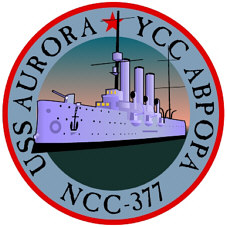
In most respects, the Moskva class continued design and engineering trends established in the Comet and Daedalus classes introduced at the end of the Romulan War. As in these classes, ship functions were clearly divided between a command/crew hull and an engineering/propulsion hull. The bridge was returned to its customary position atop the command hull and the shuttlecraft bay was again placed in the secondary hull. The fusion reactor was centered along the longitudinal axis of the ship, and impulse thrust ports exited immediately in front of the warp bustle detachment seam.
Weaponry was the then-standard mix of fusion-warhead missiles and lasers. New to this class was an early type of ultraphased pulse laser cannon, two of which were mounted in the chin of the primary hull. Although the on-target energy output of this new weapon approached that of early phasers, its power requirement was higher and its range was substantially less. However, subsequent refinements lead to steady improvement and, ultimately, to the development of true phasers in 2202. Although Moskva -class ships were the first to be fitted with phasers in 2204, lasers were still carried by the Moskva class and later classes until the 2220s. Finally, warp capability was supplied by the long-awaited Hiryu mark III drive units.
The first ship of the new class, USS Moskva (NCC-374), entered service with Starfleet in April 2179. An additional 30 ships (NCC-375 to NCC-404) joined the fleet through 2183. Moskva -class ships gained immediate popularity with officers and crews. First, total laser firepower was increased some 75% over that in the preceding Wasp class. Second, because the ship's mass was more equally distributed along the longitudinal axis than in the Wasp class, Moskva was significantly more maneuverable at both sublight and warp speeds. Finally, the more warp-dynamic design allowed greater cruising and maximum speeds.
The Moskva class had an outstanding safety record. No ships were lost because of mechanical failures. However, an incident occurred aboard USS Johannesburg in 2186 when a faulty nacelle flow monitor falsely indicated a runaway positive feedback power loop within the plasma flow governor. Believing that a catastrophic warp core explosion was imminent, Chief Engineer Roberta Bocharnikov ordered the warp nacelles and warp bustle to be separated. Although unnecessary, these maneuvers were successful in causing the separated warp core to initiate its automatic shut-down routine. The warp core, nacelles, and the rest of the ship were towed to Starbase 13, where they were successfully re-mated. Despite her supreme embarrassment, Bocharnikov oversaw the reassembly and relaunching of Johannesburg and retained her position as chief engineer.
Although most ships of the Moskva class had left front-line service by 2215, some continued to serve as auxiliaries and training vessels until the 2240s. After retirement from active duty, Moskva -class ships were used as testbeds for many emerging technologies owing to the similarities of their layouts to those of succeeding classes. USS Moskva was the site of the first successful ship-to-surface transport of a Human being in 2206, and USS Gato was the first ship to fire photon torpedoes in 2214. In addition, Taurus -class tugs, which entered service in 2182, and Sanford -class repair tenders, which entered service in 2185, were derived from the Moskva class and used the same primary hull and warp drive assembly.
The Moskva -class cruiser USS Aurora (NCC-377), a participant of the Battle of Eohippus IV, is on display at the Starfleet Museum.
Standard displacement: 67,750 t
Crew complement: 160 (27 officers + 133 crew) Weapons: 8 Type VI laser turrets (8 × 1 mounts), 2 Type VII laser cannons (fixed mounts), 2 missile launchers with 36 Spartak missiles Embarked craft: 4 medium cargo/personnel shuttlecraft, 2 light personnel shuttlecraft, 5 fighter/scouts Warp drive: SSWR-V-A spherical cavity M/AM reactor with 2 Hiryu III nacelles Velocity: wf 4.0, cruise; wf 5.0, supercruise; wf 5.2, maximum Units commissioned: 31
- Go to navigation
- Go to content
- Go to footer
- Moscow Yacht Show 2018
The Moscow Boat Show 2018 took place from the 1st to the 3rd of June, 2018
Moscow Yacht Show 2018 , organized in the best yacht club of the Russian capital Royal Yacht Club, finished successfully. Despite the changeable weather from June 1 to 3 all three days of the exhibition were filled with events.
A lot of customers came to the show.
The following models were presented:
- Cap Camarat 7.5 DC
- Merry Fisher 695
- Merry Fisher 795
- Merry Fisher 895
Launched June 2015
Design: Original Frank C Paine, replica Hoek Design Naval Architects
Image Credit:
Image Credit:

Topaz is derived from an original Frank C Paine design and was launched in June 2015. Paine is known as the designer of JH3 Yankee which was ultimately beaten in the defender trials by the mighty Ranger by one single second, but went on to twice defeat Ranger in subsequent races.
After extensive research and testing, Hoek Design drew the lines for Topaz from an unbuilt 1935 Paine boat which was designed to take on the Super Js using the maximum waterline length at 88ft, one foot longer than any other J of the time. Paine’s design preference, under the rule, was to accept slightly less sail area in order to maximise waterline length.
On Topaz, Hoek aligned this with a high aspect – narrower and deeper – keel and low wetted surface area. This produced a hull which is fast in light airs and downwind.
Mast position, stability and sail areas were optimised to the J Class Association handicap system and the hull structure designed to accept maximum running backstay loads. Topaz is unique among the modern replica Js having a low bulwark around the deck edge which adds extra stiffness. And Topaz, Lionheart and Svea are all built with longitudinal framing which maximises fore and aft stiffness.
Besides being azure blue underwater, Topaz is recognisable in having a double cockpit, double deckhouse layout. The helm position is in front of the aft deckhouse and behind the main cockpit. This means all the key positions are relatively close to each other, and the primary winches as well as the mainsheet winches are close to the helm.
Topaz’s core crew have been together pretty much since the boat was launched. America’s Cup winner and Olympic silver medallist Peter Holmberg steers Topaz with Nacho Postigo as navigator and Italian Louis Vuitton Cup winner Francesco de Angelis is tactician . Germany’s renowned round the world and America’s Cup sailor Timmy Kroger is project manager.
Length at waterline
displacement
upwind sail area
spinnaker sail area

2016 Saint Barths Bucket (Topaz debut)
2019 superyacht cup palma.
Topaz class winners
2021 Les Voiles de Saint Tropez
2022 superyacht cup palma.

This site uses cookies to enhance your experience. By continuing to browse the site, you consent to the use of cookies. View our Privacy Policy for more information.
UFI approval for Moscow Boat Show
- Inspiration
Related News
Popular news this week, popular news this month, latest news.
- Yacht Charter & Superyacht News >
Written by Zuzana Bednarova
September 17 was marked by meeting of the UFI Executive Committee. During the event, the Committe approved the admission of Crocus Expo IEC as a full member of UFI in categories of “Exhibition Organizers” and “Exhibition Centres. Moscow Boat Show has been granted the status of “UFI Approved Event”.
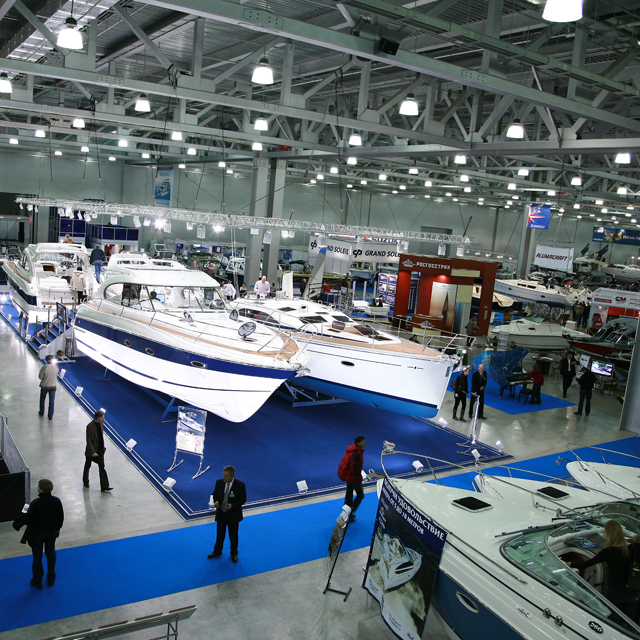
Moscow Boat Show
UFI, The Global Association of the Exhibition Industry is the association of trade show organizers, fairground owners, national and international associations of the exhibition industry, and its partners. As of 2012, it has 608 members in 224 cities from 86 countries covering 6 continents. The association members are responsible for the management and operation of over 4 500 profile events. The association represents more than 1 000 000 of exhibitors and more than 150 000 000 visitors.
The Crocus Expo Exhibition Centre is a listed member of the International Association of Congress Centres (AIPC), the Russian Union of Exhibitions and Fairs, the Guild of Exhibition and Fair Operators by the Moscow Chamber of Commerce and Industry. Donald Tramp fund has awarded Crocus Expo IEC Diamond Excellence Award.
Crocus Expo IEC is an ideal venue for running of large international and national exhibitions of different profile including congress events, conferences and scientific symposiums.About 50% of all exhibition events of Moscow take place in Crocus Expo and average exposition space load comprises 85%.
Moscow Boat Show provides the perfect platform from which to preview new products, evaluate market trends, and establish long-lasting and commercially profitable partnerships. Despite the dynamic changes taking place in Russia and the rapid growth of the yachting sector, the show continues to complement and reflect the industry’s demand and is a promotional opportunity not to be missed!
The exposition space will increase up to 45 000 sq m in 2013. More than 350 Russian and foreign companies will participate in the show. The scale of the project confirms confident positions of its positive development.
Moscow Boat Show is the largest project in Russia presenting all the best in the world of yachting. The exhibition annually shows high level of attendance and has already proved as significant and noteworthy event in the world of yachts and boats.
Please contact CharterWorld - the luxury yacht charter specialist - for more on superyacht news item "UFI approval for Moscow Boat Show".
- Charity & Fund Raising
- CharterWorld News
- Classic Yachts
- Coronavirus
- Cruise Ship
- Ecological Yachts
- Expedition Yachts
- Expert Broker Advice
- Feature Superyachts
- Interior Design
- Legal & VAT Yacht Issues
- Luxury Catamarans
- Luxury Gulet
- Luxury Phinisi
- Luxury Trimarans
- Luxury Yacht Design
- Luxury Yachts
- Marinas & Harbours
- Marine Ecology
- Marine Electronics
- Marine Equipment
- Mega Yachts
- Modern Yachts
- Motor Yachts
- New Launch Yachts
- New To Charter
- Open Style Sports Yachts
- Private Jets
- Sailing Yachts
- Social Media
- Sports Yachts
- Superyacht Crew
- Superyacht Photographers
- Superyacht Products & Supplies
- Superyacht Refits
- Superyacht Reviews
- Superyachts
- Uncategorized
- Yacht Builders
- Yacht Charter
- Yacht Charter Destinations
- Yacht Charter Picks
- Yacht Charter Specials
- Yacht Delivered to Owner
- Yacht Designers
- Yacht Events & Boat Shows
- Yacht Fashion
- Yacht Industry News
- Yacht Photos
- Yacht Racing
- Yacht Racing & Regattas
- Yacht Safety Equipment
- Yacht Support Vessels
- Yacht Tenders
- Yacht Videos
- Yachting Associations
- Yachting Awards
- Yachting Business
- Yachts For Charter
- Yachts For Sale
Quick Enquiry
Superyacht news:.
Email Your Yachting News to: news @ charterworld.com
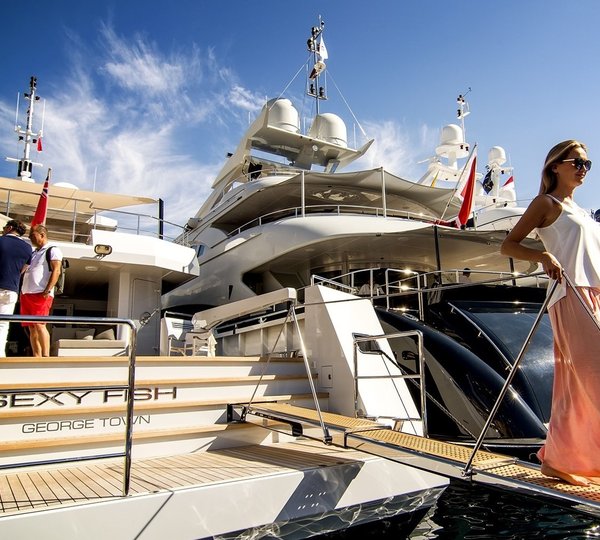
Luxury Yachts At Events

The Caribbean
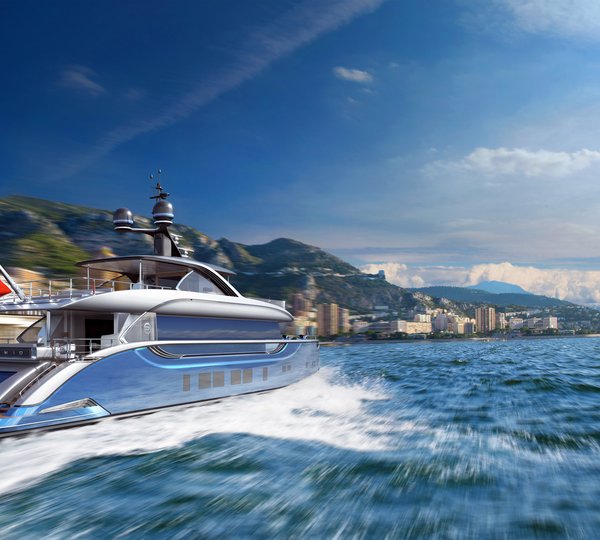
The Mediterranean
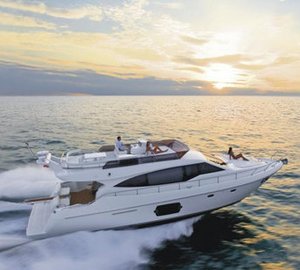
Ferretti Group announces its presence at Moscow Boat Show 2013
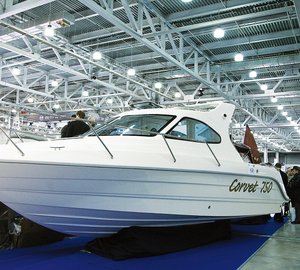
Dates for the 6th International exhibition of boats and yachts Moscow Boat Show 2013 revealed
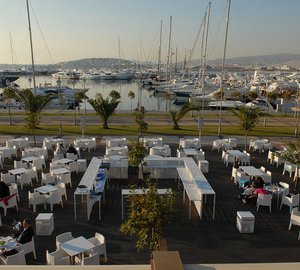
VIP Mega-Yacht Destination Flisvos Marina to participate in Moscow Boat Show 2013

Official Opening of Moscow Boat Show 2013 on March 12
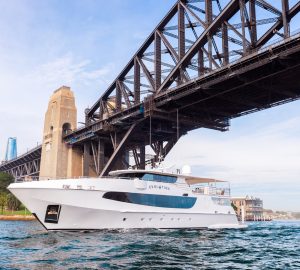
39m luxury yacht EVOLUTION for charter on Australia’s east coast
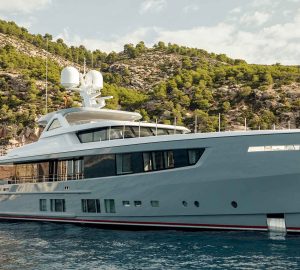
Charter Special on board 36m luxury yacht CALYPSO I from Italy to Greece
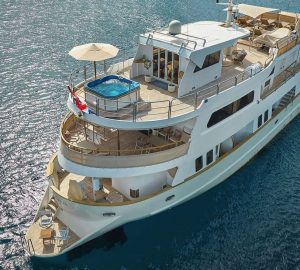
Croatian charter yacht LA PERLA offering 10% discount on exclusive vacations in the Adriatic
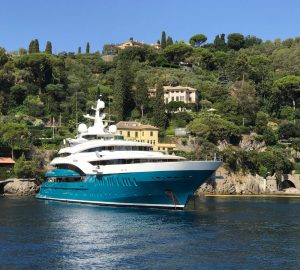
Charter a yacht during the Monaco Historic and F1 Grand Prix festivals and soak up the atmosphere from on deck
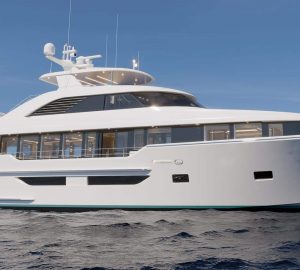
Westport announce the first hull of their 36m W117 range is nearing completion

Superyacht LAUNCHPAD previously Feadship 1010 delivered
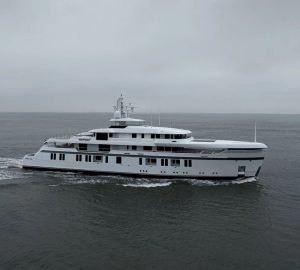
65m Feadship superyacht PROMISE.D delivered
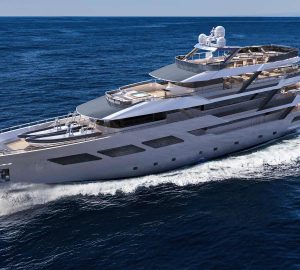
Discover our Top 10 brand new yachts available for charter worldwide this year
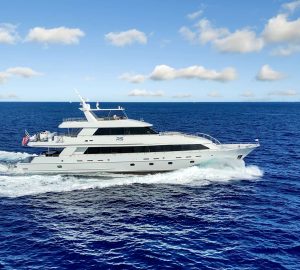
Florida charter yacht REAL SUMMERTIME offering 10% discount
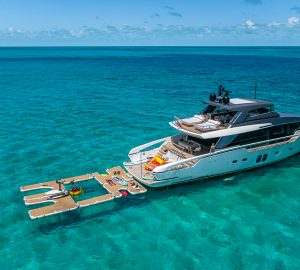
Discover summer in New England aboard a luxury charter yacht: Escape to this beautiful northeast corner of the USA
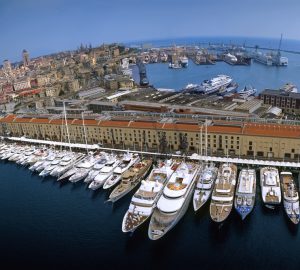
Looking ahead to the 2024 MYBA Charter Show in Genoa
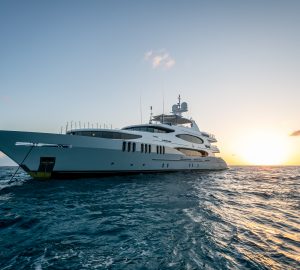
Last minute yacht charter deals in the Bahamas
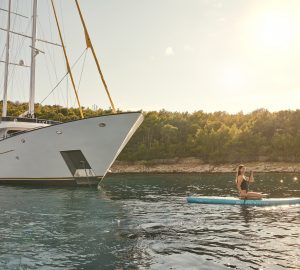
49m sailing yacht ANIMA MARIS is offering discounted rates for the remaining summer weeks in Croatia
super yacht viva

The Stunning Ritz Carlton EVRIMA Yacht
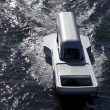
Gliding Across Tokyo’s Sumida River: The Mesmerizing Zipper Boat
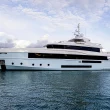
CROCUS Yacht: An 48 Meter Beauty by Admiral
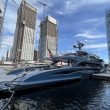
PHI Yacht – Royal Huisman’s $45 Million Superyacht
- Zuretti Interior Design
- Zuretti Interior
- Zuccon International Project
- Ziyad al Manaseer
- Zaniz Interiors. Kutayba Alghanim
- Yuriy Kosiuk
- Yuri Milner
- Yersin Yacht
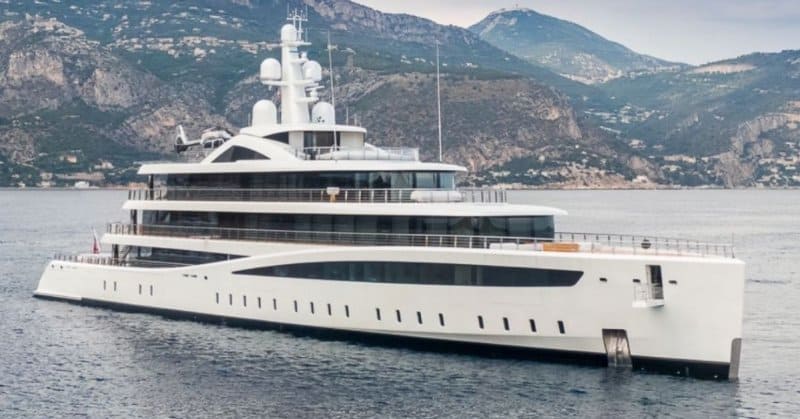
- Superyachts
VIVA Yacht – Incredible $175 Million Superyacht
VIVA yacht is a masterpiece built by the renowned Feadship De Voogt Naval Architects , a Netherlands-based yacht designer, in their Kaag shipyard.
She was built in 2021 and is considered one of the largest motor yachts in the world that can accommodate up to 14 guests in luxurious comfort and 18 crew for excellent service.
This majestic 308-foot superyacht is considered to be the first in a line of future luxury yachts that also focus on significantly reducing its carbon footprint by running on diesel-electric power.
According to the AIS data , she is currently sailing under the flag of the Cayman Islands.
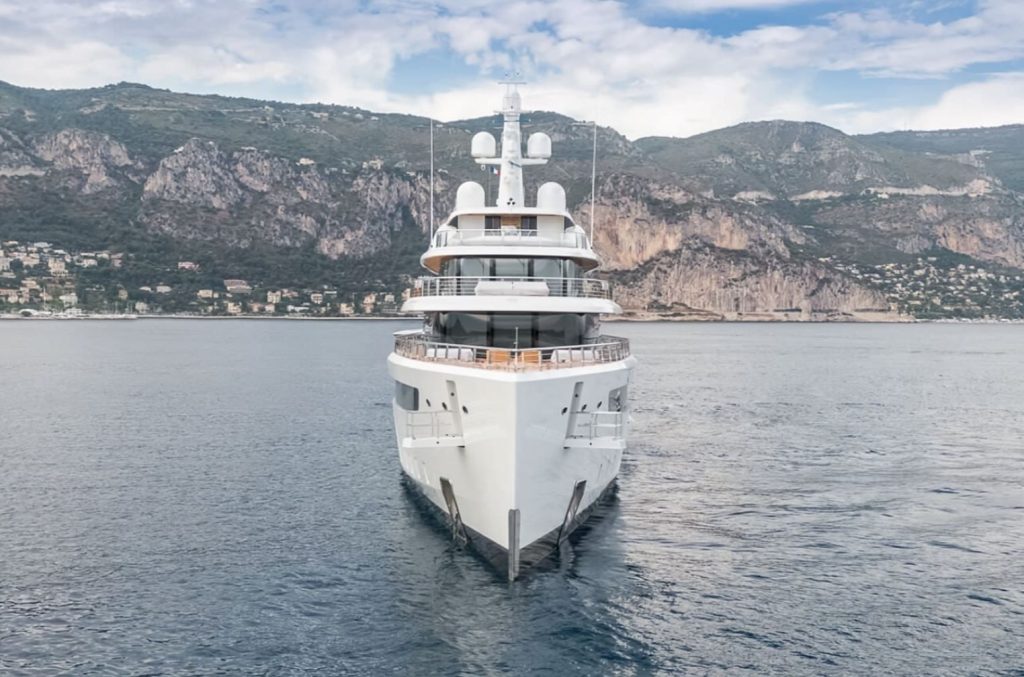

VIVA yacht interior
The VIVA yacht is a luxury yacht with an emphasis on environmentalism. Her design was penned by Peter Marino featuring “great edifices” of glass, including floor-to-ceiling windows that allow for natural light and ventilation throughout the interior spaces.
Marino’s theme for this superyacht is an open beach house style with a touch of minimalism clearly shown in the design’s abundance of clean lines.
She boasts of a movie theatre, beauty salon, underwater lights, elevator, beach club, gym, and air conditioning for the guests’ enjoyment.
She features an exterior design by Azure Yacht Design & Naval Architecture with an aluminum superstructure and teak decks for a classic look.
The superyacht’s exterior is created with a modern, minimalistic design in a special pearl-white livery.
The clean lines and abundance of glass draw attention from all who see it as she sails across blue waters.
Her hull is built to be as efficient as possible, reducing the engine power required to sail through the waters.
Additionally, she features the largest tender and the longest hull doors ever seen on a Feadship.

VIVA Yacht specifications
The VIVA yacht is a stunning 94-meter-long luxury yacht with an incredible 13.6m beam and a volume of 2999 gross tonnage, making it one of the largest yachts in its class.
Her water tanks can store around 71,000 liters of fresh water that the guests can use.
The yacht is powered by twin MTU engines with a maximum speed of 20 knots, a cruising speed of 12 knots, and a range that extends over 5k nautical miles. She is also equipped with at-anchor stabilizers to provide exceptional comfort levels.
She is hailed as the most environmentally-friendly luxury vessel of its kind because of her eco-friendly waste treatment plant and heat recovery systems on board.
She has been installed with an exceptionally advanced hybrid propulsion system to keep the environmental impact at around the same levels as his previous Feadship, despite that being 32 meters shorter in length.
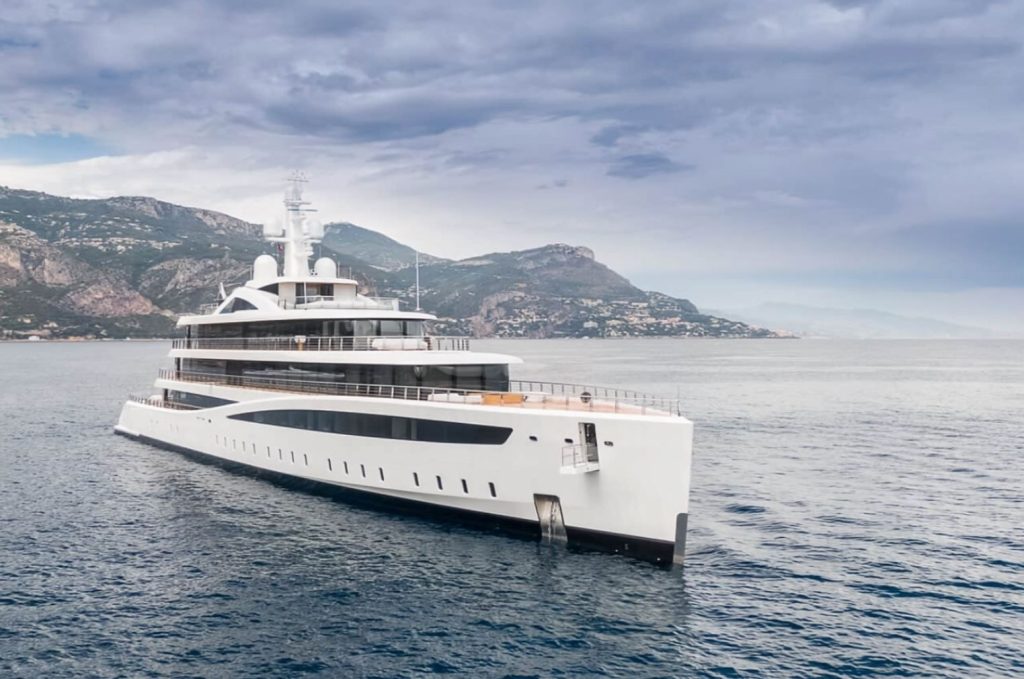
VIVA yacht price
Her price is $175 million and her annual running cost is at around US$ 17.5 million yearly. She is currently not believed to be for sale nor available for private charter.

As a private yacht, little is known about her owner who is a billionaire and features his initials on the helicopter register N702FF.
VIVA yacht summary
VIVA yacht is a remarkable masterpiece built by Feadship De Voogt Naval Architects, showcasing luxury and environmental consciousness.
With its sleek design and innovative diesel-electric power system, it stands as one of the largest and most eco-friendly motor yachts in the world.
The interior, designed by Peter Marino, exudes a minimalist beach house style, offering a bright and inviting atmosphere for guests.
On the exterior, VIVA’s modern and minimalistic design, along with its efficient hull, captures attention as it sails across the waters.
With a price tag of $175 million, VIVA sets new standards for luxury and sustainability in the yachting industry, reflecting the owner’s commitment to excellence and environmental responsibility.
Do you have anything to add to this listing?
- Azure Yacht design & Naval Architecture
- Peter Marino
Love Yachts? Join us.
Related posts.
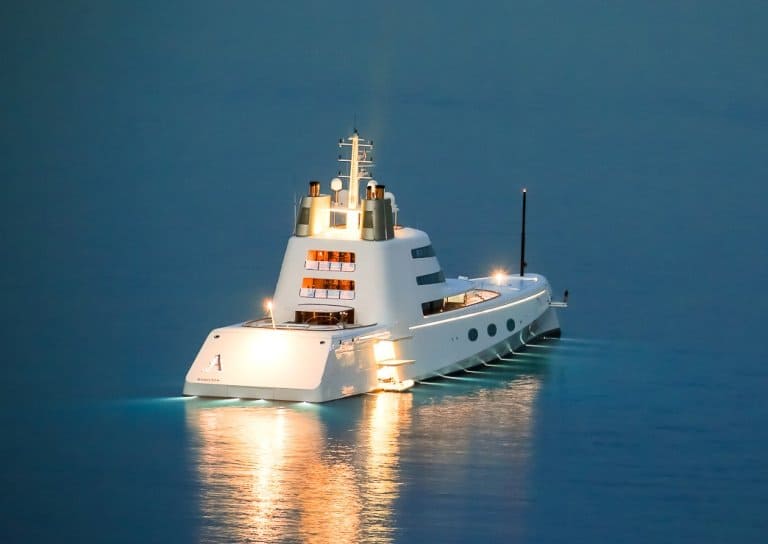
MOTOR YACHT A – Cutting-edge $300M Superyacht
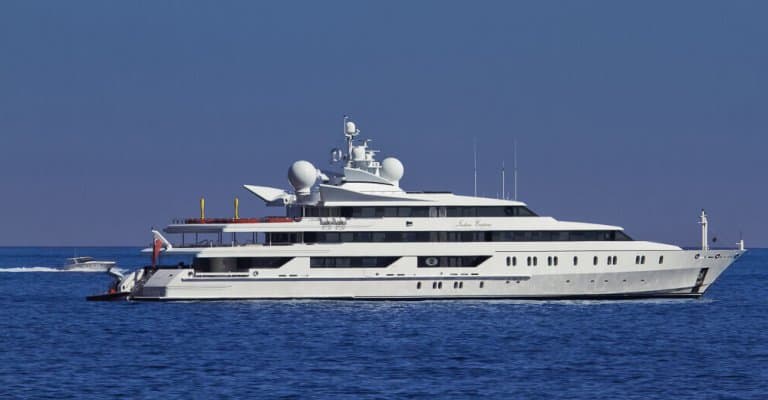
H Yacht – Extraordinary $150M Superyacht
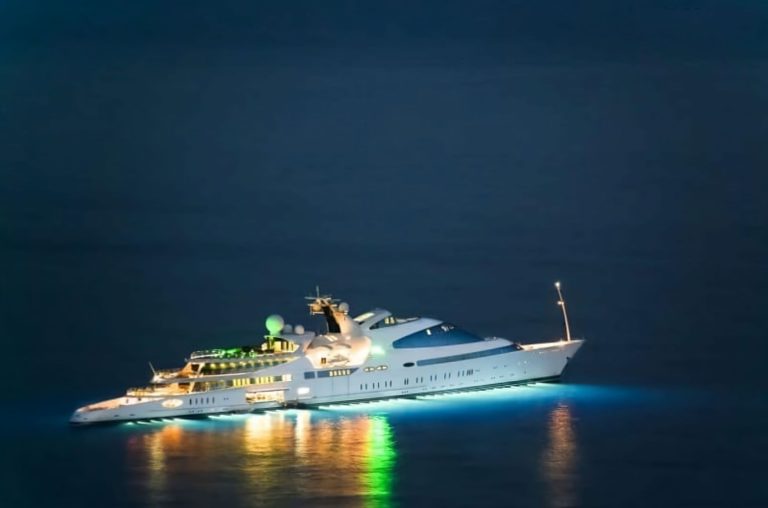
YAS Yacht – High-end $180M Superyacht
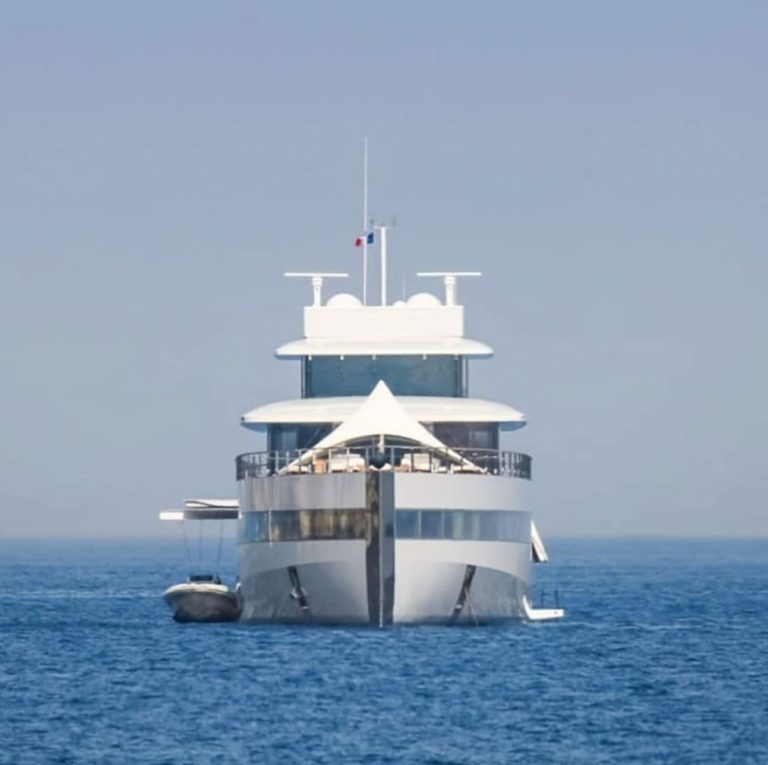
VENUS Yacht – Captivating $120M Superyacht
Please use a modern browser to view this website. Some elements might not work as expected when using Internet Explorer.
- Landing Page
- Luxury Yacht Vacation Types
- Corporate Yacht Charter
- Tailor Made Vacations
- Luxury Exploration Vacations
- View All 3564
- Motor Yachts
- Sailing Yachts
- Classic Yachts
- Catamaran Yachts
- Filter By Destination
- More Filters
- Latest Reviews
- Charter Special Offers
- Destination Guides
- Inspiration & Features
- Mediterranean Charter Yachts
- France Charter Yachts
- Italy Charter Yachts
- Croatia Charter Yachts
- Greece Charter Yachts
- Turkey Charter Yachts
- Bahamas Charter Yachts
- Caribbean Charter Yachts
- Australia Charter Yachts
- Thailand Charter Yachts
- Dubai Charter Yachts
- Destination News
- New To Fleet
- Charter Fleet Updates
- Special Offers
- Industry News
- Yacht Shows
- Corporate Charter
- Finding a Yacht Broker
- Charter Preferences
- Questions & Answers
- Add my yacht
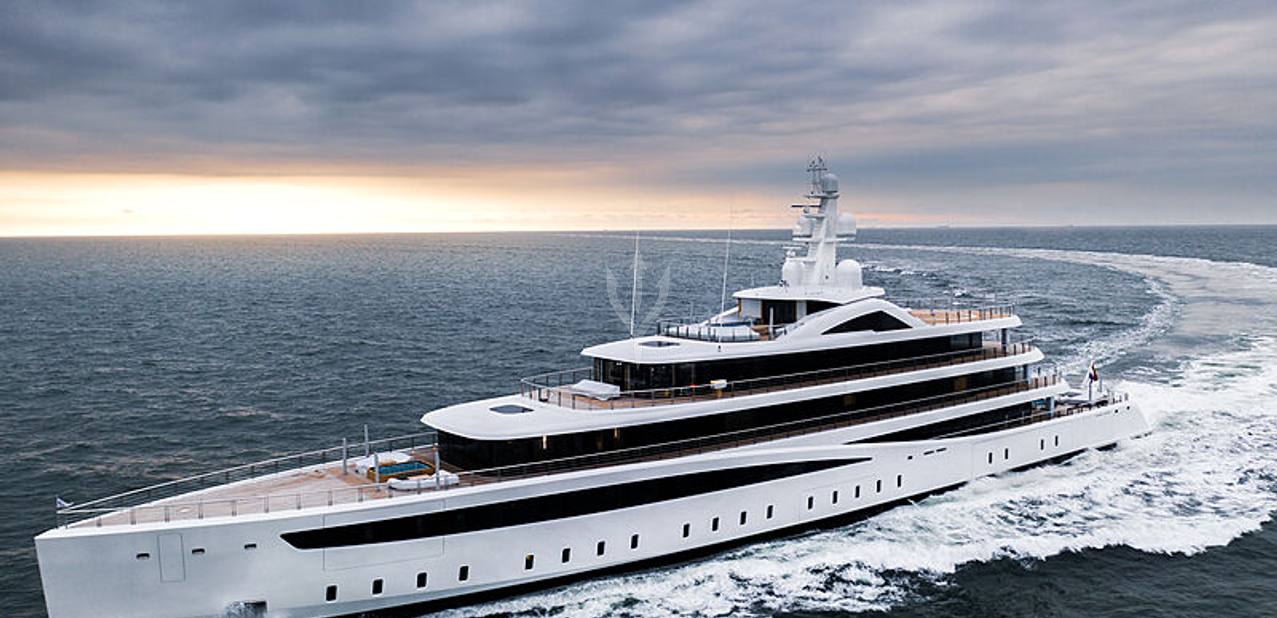
NOT FOR CHARTER *
This Yacht is not for Charter*
SIMILAR YACHTS FOR CHARTER
View Similar Yachts
Or View All luxury yachts for charter
- Luxury Charter Yachts
- Motor Yachts for Charter
- Amenities & Toys
VIVA yacht NOT for charter*
94m / 308'5 | feadship | 2021.
Owner & Guests
- Previous Yacht
Special Features:
- Elevator for convenient access
- Multi-award winning
- Comfortable Movie Theatre
- Inviting pool
- Lloyds Register ✠ 100A1 SSC Yacht, Mono, G6 ✠ LMC, UMS classification
The multi-award winning 94m/308'5" motor yacht 'Viva' was built by Feadship in the Netherlands at their Kaag shipyard. Her interior is styled by design house Peter Marino and she was delivered to her owner in June 2021. This luxury vessel's exterior design is the work of Azure Yacht Design.
Guest Accommodation
Viva has been designed to comfortably accommodate up to 16 guests in 8 suites. She is also capable of carrying up to 38 crew onboard to ensure a relaxed luxury yacht experience.
Onboard Comfort & Entertainment
Her features include a movie theatre, beauty salon, elevator, underwater lights, beach club, gym and air conditioning.
Range & Performance
Viva is built with a steel hull and aluminium superstructure, with teak decks. Powered by twin diesel-electric MTU (16V 4000 M73L) 16-cylinder 3,916hp engines running at 2050rpm, she comfortably cruises at 12 knots, reaches a maximum speed of 20 knots. Viva features at-anchor stabilizers providing exceptional comfort levels. Her water tanks store around 71,000 Litres of fresh water. She was built to Lloyds Register ✠ 100A1 SSC Yacht, Mono, G6 ✠ LMC, UMS classification society rules.
*Charter Viva Motor Yacht
Motor yacht Viva is currently not believed to be available for private Charter. To view similar yachts for charter , or contact your Yacht Charter Broker for information about renting a luxury charter yacht.
Viva Yacht Owner, Captain or marketing company
'Yacht Charter Fleet' is a free information service, if your yacht is available for charter please contact us with details and photos and we will update our records.
Viva Photos
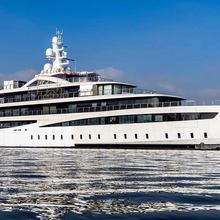
Viva Awards & Nominations
- The World Superyacht Awards 2022 Best Displacement Motor Yacht of 2,000GT and above Winner
- The World Superyacht Awards 2022 Motor Yacht of the Year Winner
- Boat International Design & Innovation Awards 2022 Outstanding Exterior Motor Yacht Design - 60m and above Winner
NOTE to U.S. Customs & Border Protection
Specification
M/Y Viva
SIMILAR LUXURY YACHTS FOR CHARTER
Here are a selection of superyachts which are similar to Viva yacht which are believed to be available for charter. To view all similar luxury charter yachts click on the button below.
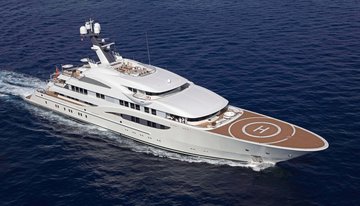
85m | Lurssen
from $0 p/week ♦︎
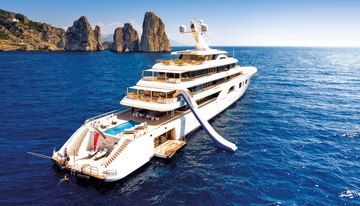
92m | Feadship
from $1,500,000 p/week
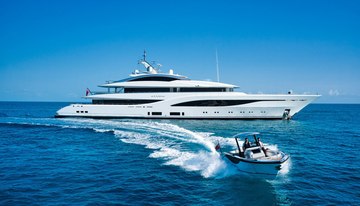
75m | Feadship
from $900,000 p/week *
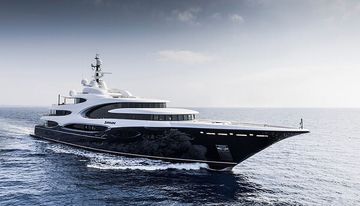
89m | Oceanco
from $1,100,000 p/week

90m | Oceanco
from $1,300,000 p/week ♦︎
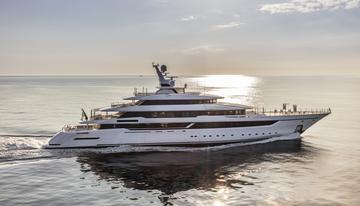
80m | Columbus Yachts
from $921,000 p/week ♦︎

80m | Yachtley
from $867,000 p/week ♦︎
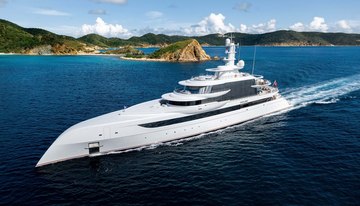
80m | Abeking & Rasmussen
from $1,150,000 p/week
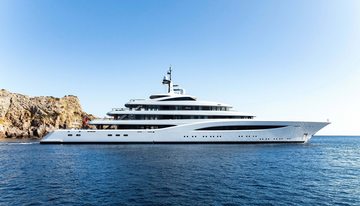
97m | Feadship
from $1,733,000 p/week ♦︎
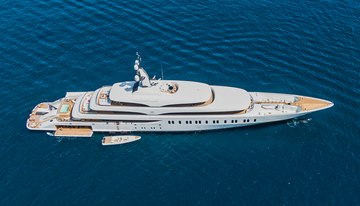
108m | Benetti
from $1,950,000 p/week ♦︎
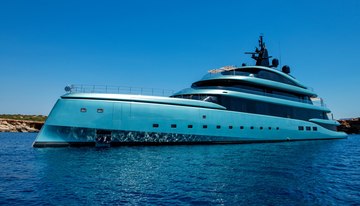
75m | Admiral Yachts
from $975,000 p/week ♦︎

93m | Feadship
from $1,517,000 p/week ♦︎
As Featured In
The YachtCharterFleet Difference
YachtCharterFleet makes it easy to find the yacht charter vacation that is right for you. We combine thousands of yacht listings with local destination information, sample itineraries and experiences to deliver the world's most comprehensive yacht charter website.
San Francisco
- Like us on Facebook
- Follow us on Twitter
- Follow us on Instagram
- Find us on LinkedIn
- Add My Yacht
- Affiliates & Partners
Popular Destinations & Events
- St Tropez Yacht Charter
- Monaco Yacht Charter
- St Barts Yacht Charter
- Greece Yacht Charter
- Mykonos Yacht Charter
- Caribbean Yacht Charter
Featured Charter Yachts
- Maltese Falcon Yacht Charter
- Wheels Yacht Charter
- Victorious Yacht Charter
- Andrea Yacht Charter
- Titania Yacht Charter
- Ahpo Yacht Charter
Receive our latest offers, trends and stories direct to your inbox.
Please enter a valid e-mail.
Thanks for subscribing.
Search for Yachts, Destinations, Events, News... everything related to Luxury Yachts for Charter.
Yachts in your shortlist

The global authority in superyachting
- NEWSLETTERS
- Yachts Home
- The Superyacht Directory
- Yacht Reports
- Brokerage News
- The largest yachts in the world
- The Register
- Yacht Advice
- Yacht Design
- 12m to 24m yachts
- Monaco Yacht Show
- Builder Directory
- Designer Directory
- Interior Design Directory
- Naval Architect Directory
- Yachts for sale home
- Motor yachts
- Sailing yachts
- Explorer yachts
- Classic yachts
- Sale Broker Directory
- Charter Home
- Yachts for Charter
- Charter Destinations
- Charter Broker Directory
- Destinations Home
- Mediterranean
- South Pacific
- Rest of the World
- Boat Life Home
- Owners' Experiences
- Interiors Suppliers
- Owners' Club
- Captains' Club
- BOAT Showcase
- Boat Presents
- Events Home
- World Superyacht Awards
- Superyacht Design Festival
- Design and Innovation Awards
- Young Designer of the Year Award
- Artistry and Craft Awards
- Explorer Yachts Summit
- Ocean Talks
- The Ocean Awards
- BOAT Connect
- Between the bays
- Golf Invitational
- Boat Pro Home
- Pricing Plan
- Superyacht Insight
- Product Features
- Premium Content
- Testimonials
- Global Order Book
- Tenders & Equipment

Specifications
- Yacht Type: Motor Yacht
- Yacht Subtype: Displacement
- Builder: Feadship
- Naval Architect: Feadship De Voogt Naval Architects
- Exterior Designer: Azure Yacht Design and Naval Architecture , Studio De Voogt
- Interior Designer: Peter Marino
Yacht featured in
Yachts like this, from our partners, sponsored listings.
- Super Yachts
- The Billionaires Club

- Favorites 0

Description
Similar listings.
- WhatsApp Facebook Twitter Pinterest Linkedin Email
M/Y VIVA 94m Super Yacht by Feadship
- €200,000,000
- Property ID
✨ Viva: A Maritime Symphony of Opulence 🚢🌟
Embark on a voyage of luxury aboard the magnificent superyacht Viva, a true masterpiece born from the skilled hands of Feadship in 2021. Let’s delve deeper into the opulent world that this 94m nautical wonder, owned by the illustrious billionaire Frank Fertitta, unfolds.
🌐 Design & Craftsmanship:
- Crafted by Feadship, a Dutch yacht-building legend 🇳🇱
- Azure Yacht Design & Naval Architecture’s exterior allure 🎨
- Interior elegance curated by Peter Marino 🛋️
🚀 Technical Marvels:
- Powered by cutting-edge MTU engines 🚤
- Maximum speed of 20 knots for swift journeys 🌊
- Impressive range of over 5,000 nautical miles ⚓
🛏️ Luxurious Living:
- Accommodates up to 14 guests in lavish quarters 🛏️
- A dedicated crew of 18 ensures seamless service 💼
👨💼 Ownership & Legacy:
- Proudly owned by Frank Fertitta, the visionary billionaire 💰
- Personalized touch with helicopter N702FF, a nod to Fertitta’s initials 🚁
🔱 Feadship Excellence:
- Founded in 1949, Feadship is synonymous with Dutch yachting excellence 🌐
- Custom-built luxury ranging from 40m to over 100m 🏆
🌍 Current Status & Locations:
- Track Viva’s real-time location as it graces different waters 📍
- Currently anchored in Turkish waters, showcasing the yacht’s global exploration 🌍
🔒 Security & Privacy:
- Ensured by advanced technology, making Viva a secure haven ⚔️
- Reflects Fertitta’s commitment to privacy in every ocean crossing 🌊
🔥 Financial Prowess:
- Viva’s cost price: $175 million, reflecting Frank Fertitta’s dedication to yachting excellence 💸
- Annual running costs approximately $18 million, ensuring top-notch maintenance 🛠️
- Frank Fertitta boasts a substantial net worth of $2.8 billion, accumulated through successful business endeavors.
2. Residence:
- His primary residence is in Las Vegas, a city synonymous with entertainment, luxury, and high-stakes ventures.
3. Private Jet:
- Frank Fertitta owns a Bombardier Global 7500 private jet with the registration N762F. The Bombardier Global 7500 is known for its long range and luxurious amenities.
4. Superyacht VIVA 94m:
- The crown jewel of Fertitta’s maritime pursuits is the superyacht Viva, a 94-meter vessel crafted by Feadship in 2021. Viva represents the epitome of luxury and sophistication on the high seas.
5. Source of Wealth:
- Fertitta’s wealth is derived from various sources, including his involvement in the UFC (Ultimate Fighting Championship) and Station Casinos.
6. UFC (Ultimate Fighting Championship):
- Fertitta is a key figure in the world of mixed martial arts, having been involved in the UFC. The UFC is a premier organization in the sport, contributing significantly to Fertitta’s wealth.
7. Station Casinos:
- Fertitta has interests in Station Casinos, a chain of hotel and casinos in the Las Vegas area. His involvement in the gaming and hospitality industry has been a lucrative venture.
🛳️ Feadship Legacy:
- Feadship’s portfolio includes iconic yachts like Anna, SYMPHONY, and Faith 🏆
- Continues to be the choice of discerning yacht owners worldwide 🌎
⚓ Unveiling Nautical Luxury: #VivaYacht #LuxuryLifestyle #YachtingElegance #FeadshipExcellence 🌊✨
Embark on a visual journey by swiping through breathtaking images of Viva’s interiors, exteriors, and mesmerizing ocean views. Each photo captures the essence of Viva’s opulence, making it a timeless addition to the world of luxury yachting. 📸✨
M/Y VIVA at the Monaco Yacht Show 2021
2021 The latest yacht to be completed by Feadship, Viva is a state-of-the-art hybrid superyacht that is capable of cruising up to 12 knots under green power. Viva’s hull sides have been finished in a special pearl-white finish for a glistening effect in the sunlight.
Superyacht Viva: A Marvel of Elegance and Efficiency
1. Anchored Elegance:
- Witness the breathtaking presence of the 94-meter superyacht Viva as she gracefully anchors off the Lerins Islands in the South of France. Her majestic silhouette reflects the epitome of maritime luxury.
2. Feadship Craftsmanship:
- Crafted with precision and artistry, Viva was built and launched in February 2021 at the esteemed Dutch shipyard Feadship in Kaag, the Netherlands. Feadship’s legacy of excellence is evident in every detail of this extraordinary vessel.
3. Project 817 Unveiled:
- Formerly known as Project 817, Viva emerges as one of the largest superyachts to be launched by Feadship. This nautical masterpiece is the collaborative design work of Azure Yacht Design and Feadship’s Studio De Voogt.
4. Peter Marino’s Interior Brilliance:
- The interior of Viva is a testament to the brilliance of Peter Marino’s design studio. Described as a beach house by the builder, the yacht’s interior resonates with the owner’s ‘less is more’ philosophy, showcasing clean lines and uncluttered elegance.
5. Natural Light Abundance:
- A standout feature of Viva is the curved floor-to-ceiling windows adorning both upper decks. These architectural marvels flood the interior with an abundance of natural light, creating a serene and inviting atmosphere.
6. Hybrid Propulsion Excellence:
- Viva is equipped with a state-of-the-art hybrid propulsion system, exemplifying efficiency and environmental consciousness. The yacht can cruise on diesel-electric power at a comfortable 12 knots, reaching an impressive 20 knots under diesel propulsion.
7. Owner’s Vision:
- The owner’s vision permeates every aspect of Viva’s design, emphasizing a harmonious blend of elegance, functionality, and efficiency. The ‘less is more’ philosophy extends beyond aesthetics to the vessel’s operational efficiency.
As Viva graces the waters with her presence, she stands as a symbol of maritime excellence, where craftsmanship, design, and technological innovation converge to create an unparalleled yachting experience. From the Lerins Islands to the open seas, Viva invites admiration for her timeless beauty and forward-thinking design. #SuperyachtViva #FeadshipExcellence #YachtingElegance #AzureYachtDesign #PeterMarinoDesign #HybridPropulsion #LuxuryAtSea #NauticalInnovation #FeadshipCraftsmanship
VIVA Superyacht departing the port of Gibraltar 31/1/2022
IMO: 9798246 Name: VIVA Vessel Type – Generic: Pleasure Craft Vessel Type – Detailed: Houseboat Status: Active MMSI: 319179500 Call Sign: ZGKK9 Flag: Cayman Is [KY] Gross Tonnage: 2999 Summer DWT: 401 t Length Overall x Breadth Extreme: 94 x 14 m Year Built: 2021
- Property ID: 129516
- Price: €200,000,000
- Property Type: FEADSHIP
- Property Status: Monaco Yacht Show, New Costruction, Sold
- Yacht Name: VIVA
- Ship Yard: Feadship
- Yacht Designer: Azure Yacht Design
- Naval Design: Exterior
- IMO: 9798246
- MSSI: 319179500
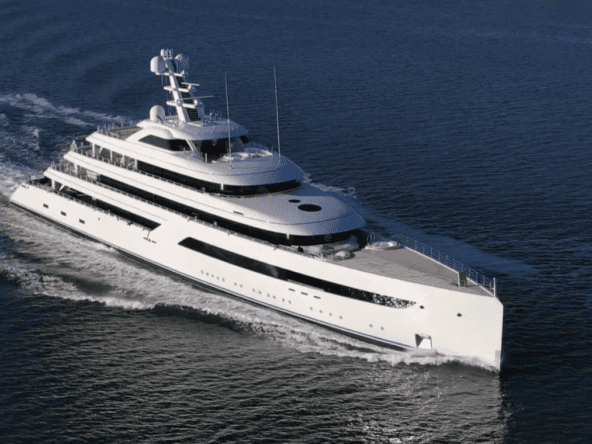
Project NB 1010 119m Super Yacht by Feadship
- €300,000,000
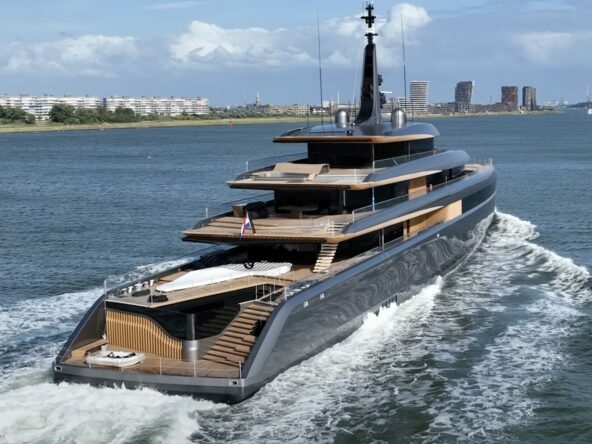
M/Y OBSIDIAN 84m Super Yacht by Feadship
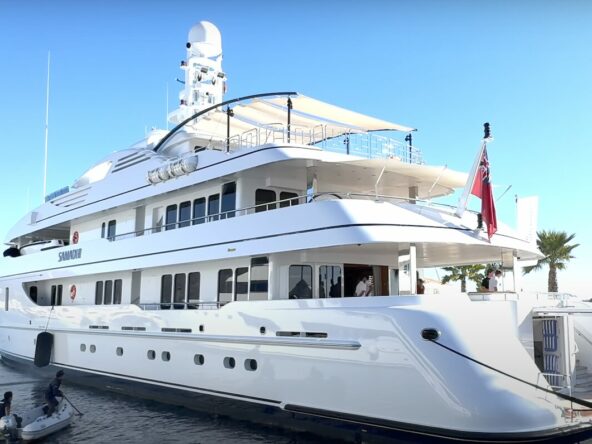
M/Y SAMADHI 50m Super Yacht by Feadship
- €45,000,000
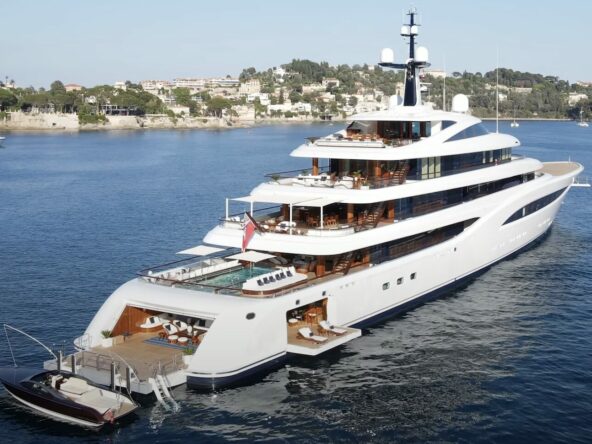
M/Y FAITH 97m Super yacht by Feadship
- €250,000,000
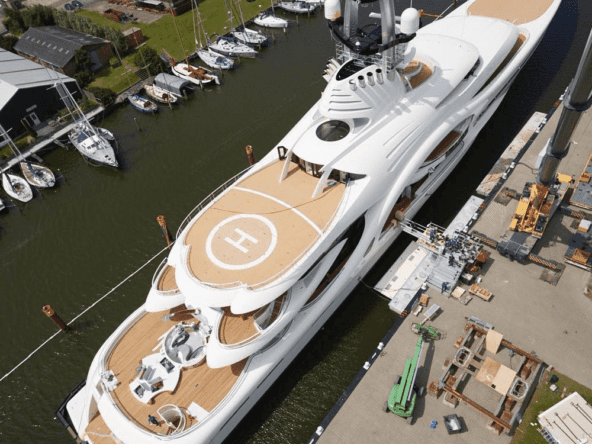
M/Y ANNA 110m Private Super Yacht by Feadship
- €230,000,000
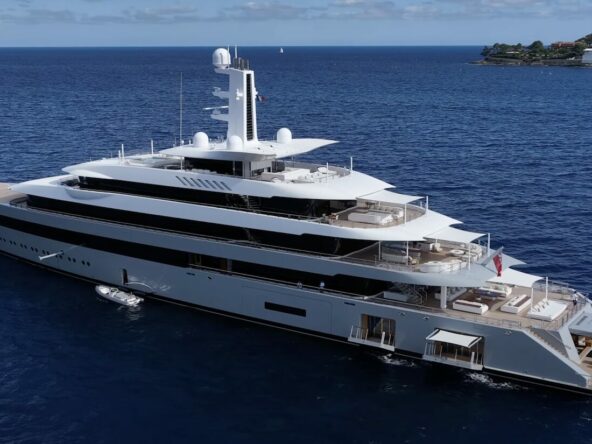
M/Y MOONRISE 99.95m Super yacht by Feadship
- €175,000,000
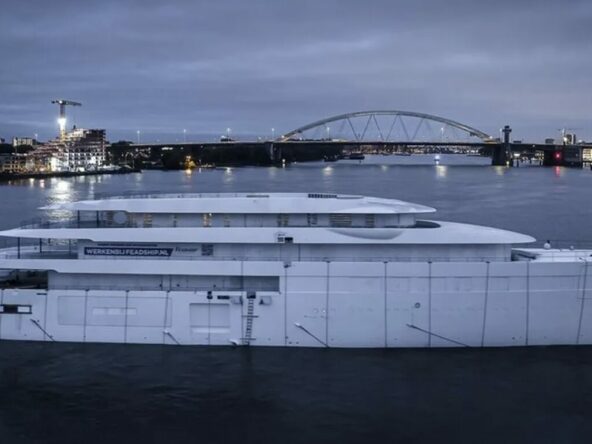
PROJECT 1013 101m Super Yacht by Feadship
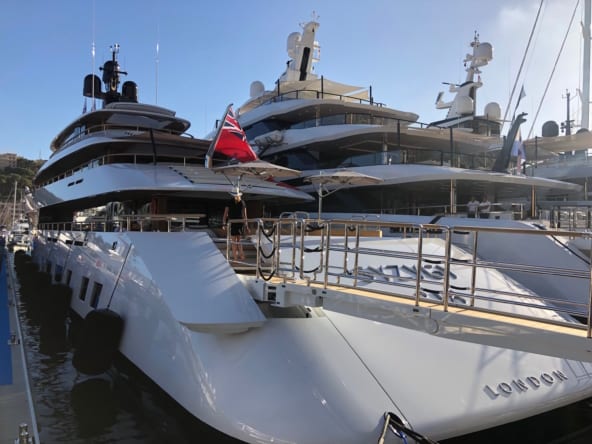
M/Y PI ex SYZYGY 818 a 77.25m Super Yacht by Feadship
- €130,000,000
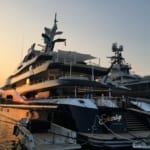
Compare listings
Reset Password
Please enter your username or email address. You will receive a link to create a new password via email.
- stefan katafai
- View Listings

- Share WhatsApp Facebook Twitter Pinterest Linkedin Email
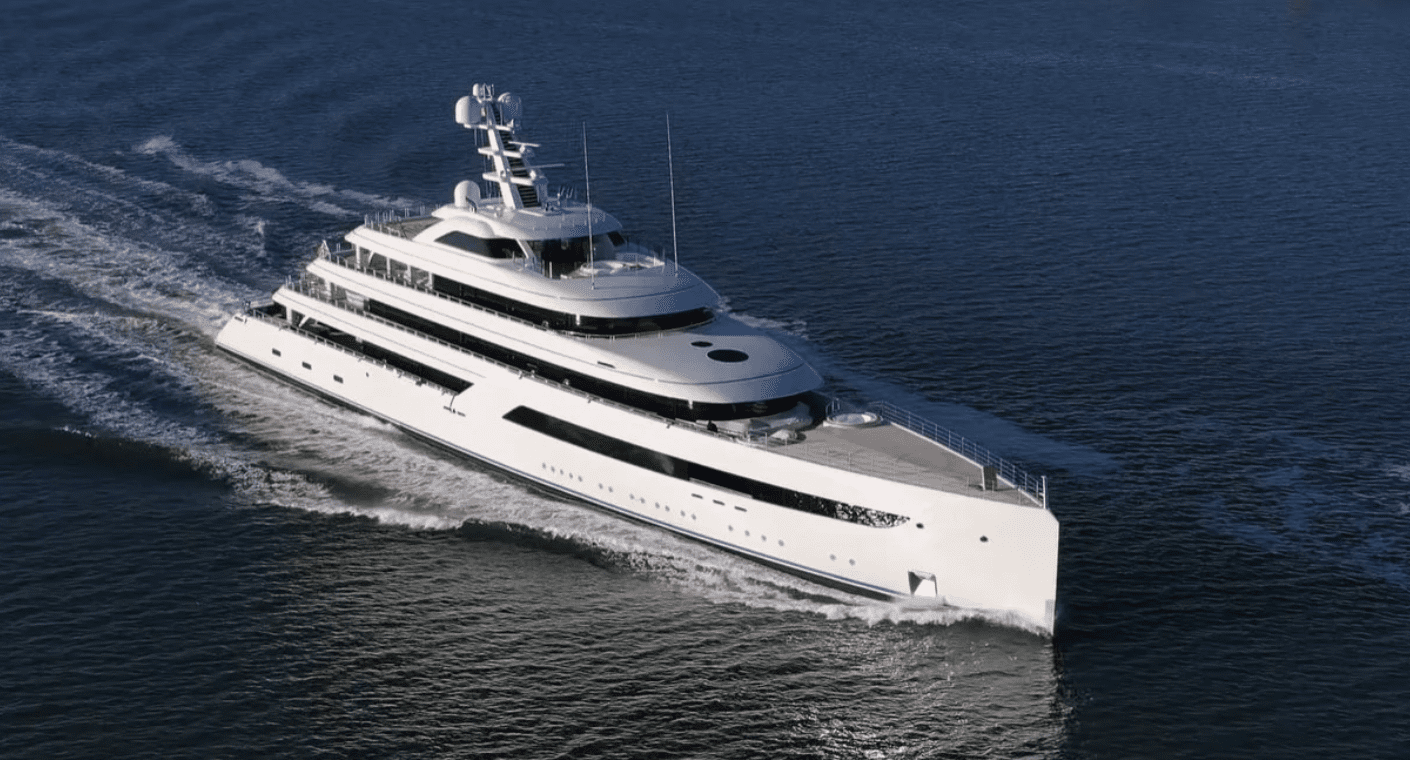
Join our Newsletter
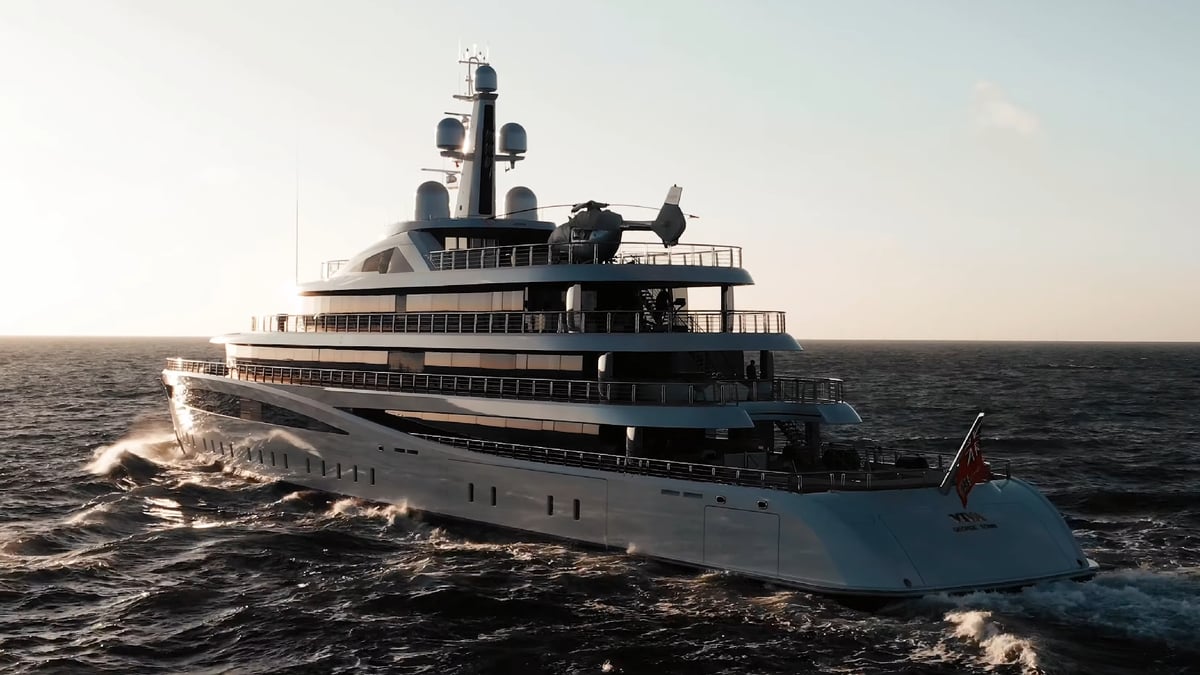
VIVA: The $250 Million Superyacht Of UFC Owner Frank Fertitta III

From his current position as CEO of Station Casinos to how he – alongside brother Lorenzo and childhood friend Dana White – transformed the UFC into a multi-billion-dollar promotion , there’s virtually endless information about how Frank Fertitta III made his fortune. How he chooses to spend said fortune, however, is a little more mysterious (at least for the fun stuff). One such indulgence we know the elder Fertitta brother has treated himself to is the ultra-luxurious Feadship-built superyacht known as Viva, which comes with an eye-watering price tag of US$175 million / AU$252 million.
Conceptualised by Azure Yacht Design & Naval Architecture in collaboration with De Voogt Naval Architects, while also showcasing interiors accomplished by Peter Marino, Viva was only completed in the Netherlands last year and delivered shortly thereafter.
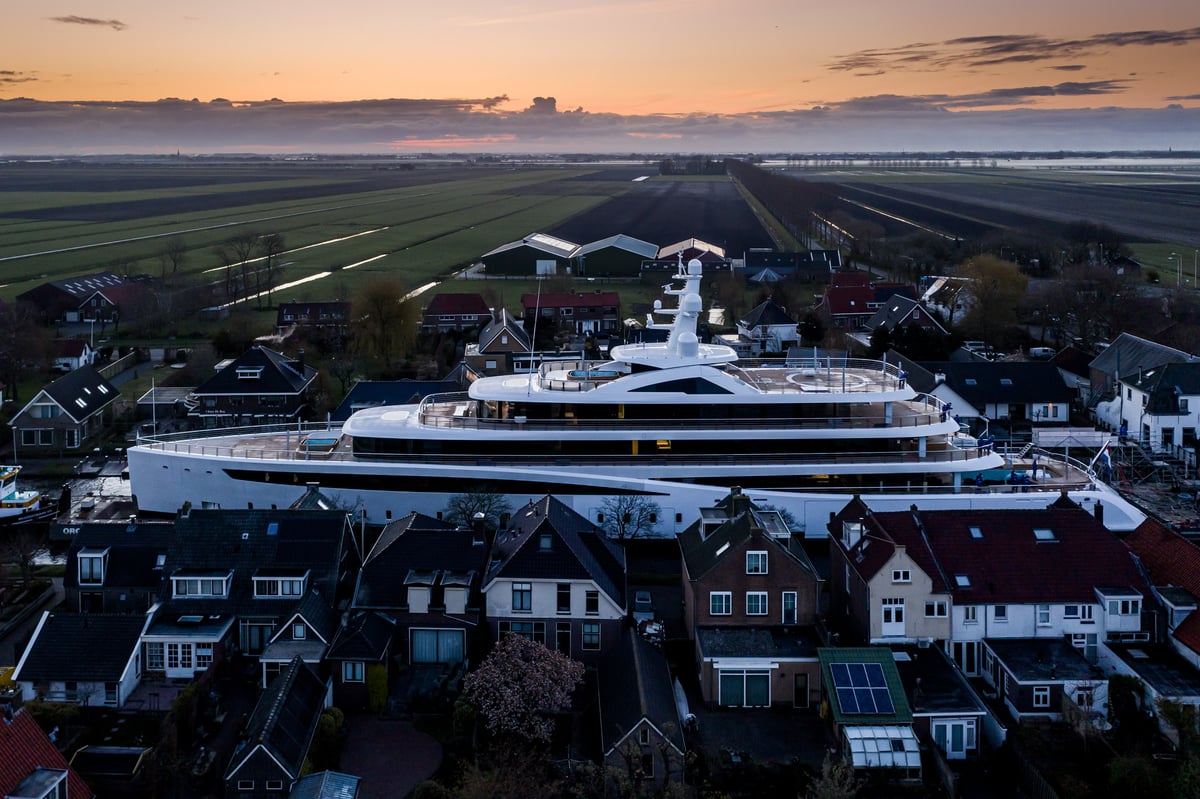
RELATED: Inside Lawrence Stroll’s $282 Million Superyacht ‘Faith’
Back to the matter of Viva, it boasts an overall length of 308 feet / 94 metres with a 13.6-metre beam and gross tonnage of 2,999 – making it the 85th largest superyacht in the entire world; seventh largest ever constructed by Feadship – and can comfortably accommodate 14 guests across seven cabins alongside a capable crew of 18.
Viva has been called the “most environmentally-friendly luxury vessel of its kind” due to it featuring a hybrid propulsion system that allows the boat to cruise using diesel-electric power, as well as a waste treatment plant and heat recovering systems.
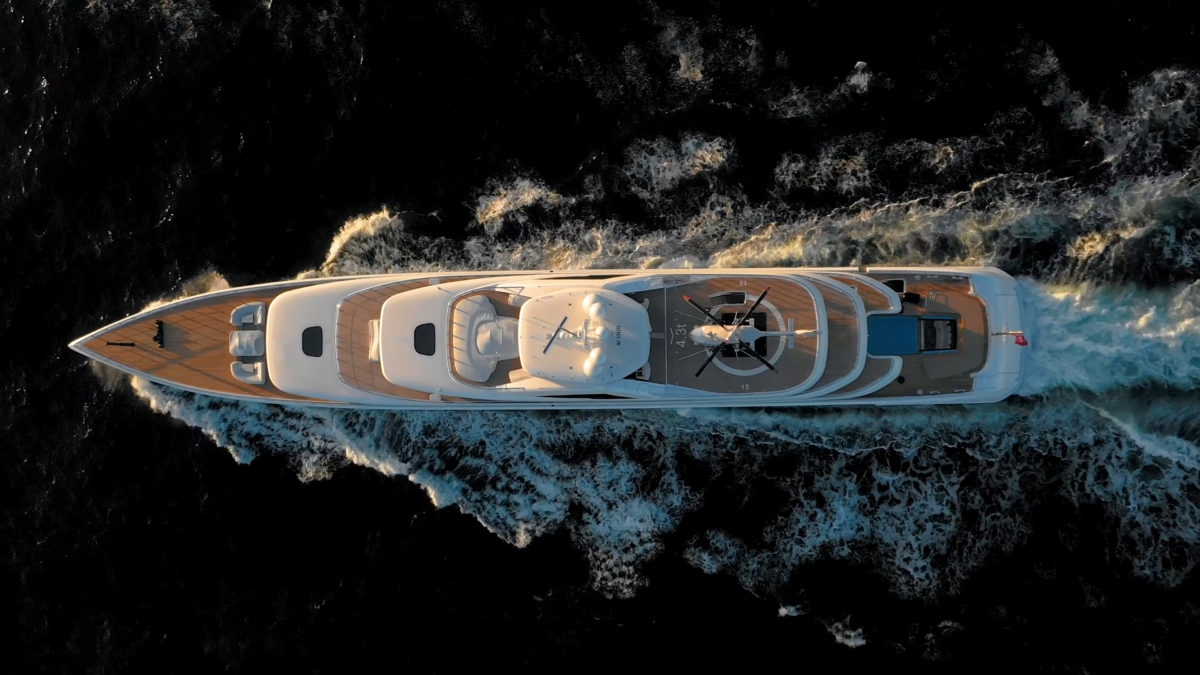
RELATED: Inside Aussie Rich Lister Ian Malouf’s Stunning €35 Million Superyacht Rebuild
- Formal dining area
- Beauty salon
- Helipad w/ helicopter registered as N702FF (believed to have been chosen for Frank’s initials)
Viva has a steel hull and aluminium superstructure.
The annual running cost of this enviable billionaire’s toy? Over US$17.5 million / AU$25 million.
Viva was last sighted en route to Martha’s Vineyard by way of Nantucket — but you can check it out for yourself via the Superyacht Times’ video below.
NOTE : As interior photos have yet to be released, the shots embedded are just samples.
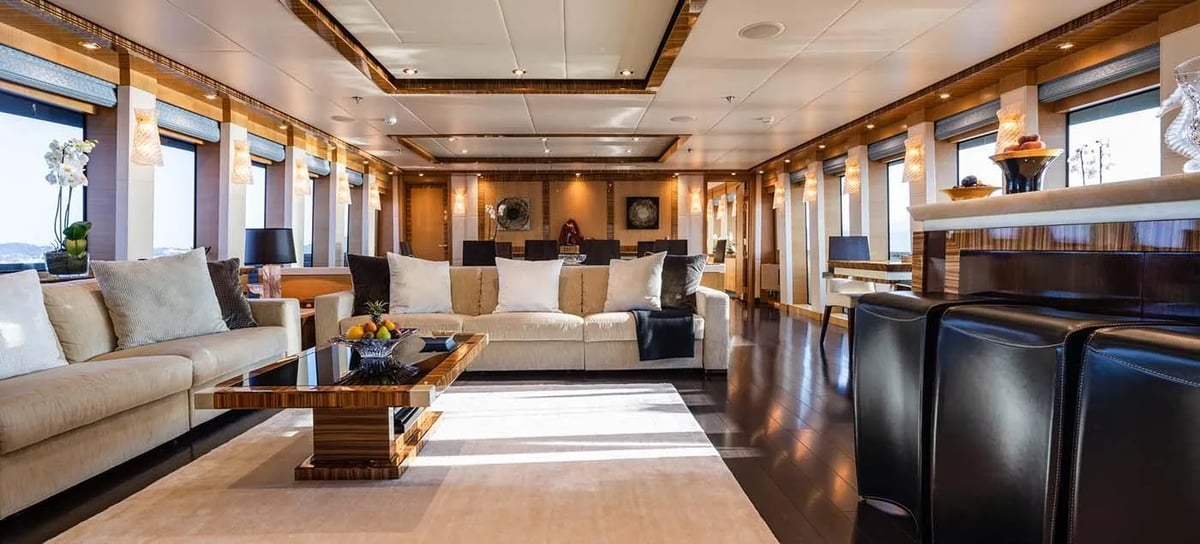
Share the article
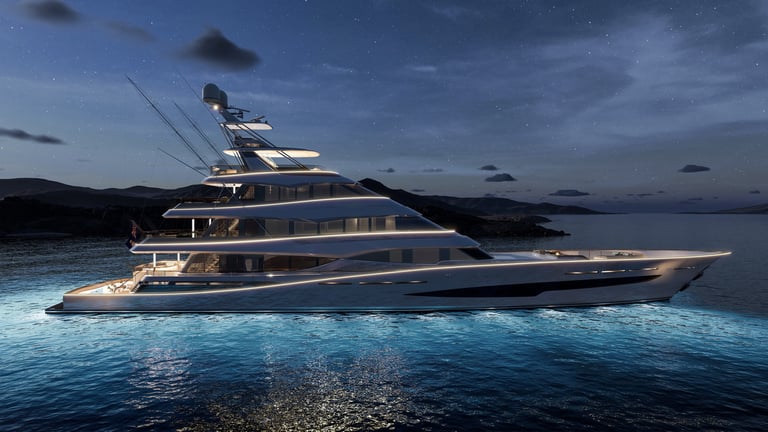
Royal Huisman’s Project 406 Is The World’s Largest Purpose-Built Fishing Boat

Ferrari Is Officially Entering The Yacht Game

Steven Spielberg Takes Delivery On His Cinematic $250 Million Superyacht

The 33-Metre Sanlorenzo SP110 ‘Steel It’ Motor Yacht Is A Jet-Powered Masterpiece

Conor McGregor Enjoyed The Monaco Grand Prix From His $5.5 Million Lamborghini Yacht
Related articles.

BMW Debuts ‘The Icon’ Boat With Soundscape Designed By Hans Zimmer

Step Inside The 75m Kenshō: 2023’s Motor Yacht Of The Year

Russian Superyacht’s Crew Spends Past Year Playing ‘Call Of Duty’ & Chilling By Pool

Superyacht Private Security Engaged In A Gun Battle With Pirates Off The Coast Of Yemen

The Feadship Project 710 Is 84m Of Sustainable Superyacht
$175 million superyacht viva moored off nantucket.
Jason Graziadei • Jul 06, 2022
If you’ve arrived or departed from the island by boat over the past few days, you couldn’t have missed the gargantuan visitor lurking just offshore.
The 308-foot superyacht Viva was moored off Nantucket earlier this week, just outside the jetties, as the massive vessel was too large to navigate into the harbor. It departed for Martha's Vineyard Wednesday night.
The $175 million Viva, which was built by Feadship in the Netherlands and completed just last year, features its own helicopter which has been spotted circling around the island this week. It is the 85th largest superyacht in the world, and is believed to be owned by billionaire Frank Fertitta III , the CEO of Station Casinos in Las Vegas and founder of Zuffa LLC, the parent company of the Ultimate Fighting Championship (UFC).
The yacht’s helicopter sports the tail number N702FF, which was believed to have been chosen for Fertitta’s initials.
"That's definitely one of the biggest vessels I've seen around Nantucket in my 20 years here," Harbormaster Sheila Lucey said on Wednesday.
The yacht has been called the “most environmental-friendly luxury vessel of its kind” as it features a hybrid propulsion system that allows the boat to travel at 12 knots under diesel-electric power, as well as a waste treatment plant and heat recovering systems on board. Its annual running costs are reported to be in excess of $17.5 million .
Viva has a steel hull and an aluminum superstructure. Among its many amenities are a cinema, a beauty salon, a gym, and, of course, a helipad on the upper deck.
Following its construction in the Dutch shipyard, the massive yacht had to squeeze through narrow canals to make it out to sea, as documented in these photos shared by CNN last year.
Current News

- Staged Operas
- Collections
- Links & FAQ
- DMITRY KORCHAK Playlist 57 great video clips
FULL DMITRY KORCHAK Playlist 57 great video clips
Information on the Performance
- Work Title: DMITRY KORCHAK Playlist
- Composer: various
- Libretto: various Libretto Text, Libretto Index
- Venue & Opera Company: various
- Recorded: various
- Type: Staged Opera Live
- Singers: Dmitry Korchak
- Conductor: various
- Orchestra: various
- Stage Director:
- Costume Designer:
Information about the Recording
- Published by: OoV
- Date Published: 2023
- Format: Streaming
- Quality Video: 3 Audio: 3
- Subtitles: nosubs
- Video Recording from: YouTube FULL VIDEO
ADDITIONAL INFORMATION ON THIS PERFORMANCE
Dmitry Korchak (born February 19, 1979 in Elektrostal/Moscow Oblast) is a Russian tenor and conductor.
Korchak received his musical education at the Moscow Choral Academy. In 2004 he won prizes at the “Francisco Viñas” International Singing Competition in Barcelona and at the Plácido Domingo Operalia International Competition in Los Angeles.
As a singer he has appeared at La Scala in Milan, the Vienna State Opera, the Berlin State Opera Unter den Linden, the Paris Opera Bastille, London’s Covent Garden and New York’s Carnegie Hall. He has collaborated with artists such as Daniel Barenboim, Riccardo Chailly, Plácido Domingo, Lorin Maazel, Zubin Mehta and Kent Nagano.
From 2017 to 2020, Dmitry Korchak was Principal Guest Conductor at the Novosibirsk Academic Opera and Ballet Theater, where he directed his own festival, and Guest Conductor at the Mikhailovsky Theater in Saint Petersburg.
Korchak has made several guest appearances at the Kissinger Sommer, the Salzburg Festival and the Rossini Festival in Pesaro, where he also worked as a conductor. Korchak also worked with the Bavarian Radio Orchestra and the Chicago Symphony Orchestra, among others.
Comment ( 1 )
Thank you for this, he’s brilliant!
Post A Comment For The Creator: Flamand Cancel reply
Your email address will not be published. Required fields are marked *
Please enable JavaScript to submit this form.
- Bahasa Indonesia
- Slovenščina
- Science & Tech
- Russian Kitchen
Why were so many metro stations in Moscow renamed?

Okhotny Ryad station in Soviet times and today.
The Moscow metro system has 275 stations, and 28 of them have been renamed at some point or other—and several times in some cases. Most of these are the oldest stations, which opened in 1935.
The politics of place names
The first station to change its name was Ulitsa Kominterna (Comintern Street). The Comintern was an international communist organization that ceased to exist in 1943, and after the war Moscow authorities decided to call the street named after it something else. In 1946, the station was renamed Kalininskaya. Then for several days in 1990, the station was called Vozdvizhenka, before eventually settling on Aleksandrovsky Sad, which is what it is called today.

The banner on the entraince reads: "Kalininskaya station." Now it's Alexandrovsky Sad.
Until 1957, Kropotkinskaya station was called Dvorets Sovetov ( Palace of Soviets ). There were plans to build a monumental Stalinist high-rise on the site of the nearby Cathedral of Christ the Saviour , which had been demolished. However, the project never got off the ground, and after Stalin's death the station was named after Kropotkinskaya Street, which passes above it.
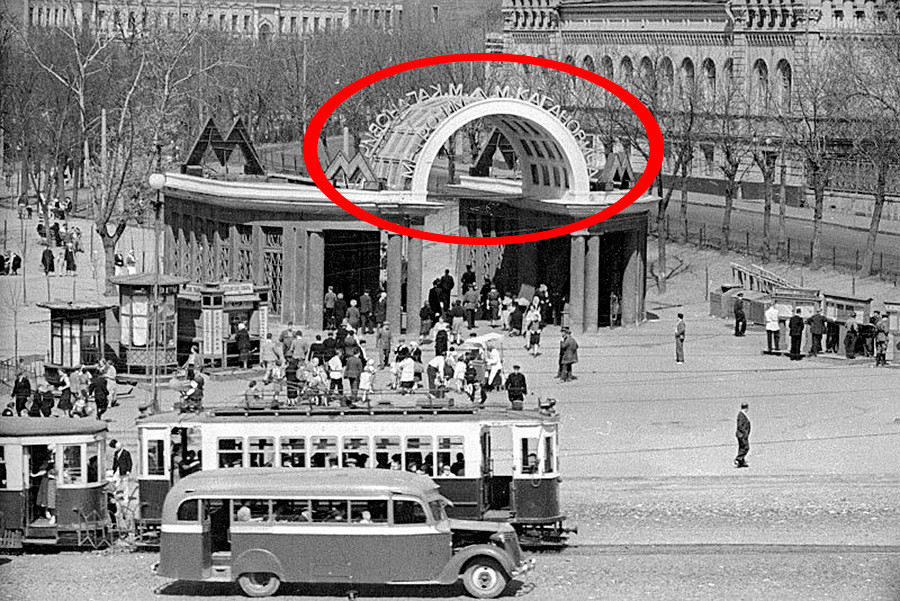
Dvorets Sovetov station, 1935. Letters on the entrance: "Metro after Kaganovich."
Of course, politics was the main reason for changing station names. Initially, the Moscow Metro itself was named after Lazar Kaganovich, Joseph Stalin’s right-hand man. Kaganovich supervised the construction of the first metro line and was in charge of drawing up a master plan for reconstructing Moscow as the "capital of the proletariat."
In 1955, under Nikita Khrushchev's rule and during the denunciation of Stalin's personality cult, the Moscow Metro was named in honor of Vladimir Lenin.

Kropotkinskaya station, our days. Letters on the entrance: "Metropolitan after Lenin."
New Metro stations that have been opened since the collapse of the Soviet Union simply say "Moscow Metro," although the metro's affiliation with Vladimir Lenin has never officially been dropped.

Zyablikovo station. On the entrance, there are no more signs that the metro is named after Lenin.
Stations that bore the names of Stalin's associates were also renamed under Khrushchev. Additionally, some stations were named after a neighborhood or street and if these underwent name changes, the stations themselves had to be renamed as well.
Until 1961 the Moscow Metro had a Stalinskaya station that was adorned by a five-meter statue of the supreme leader. It is now called Semyonovskaya station.

Left: Stalinskaya station. Right: Now it's Semyonovskaya.
The biggest wholesale renaming of stations took place in 1990, when Moscow’s government decided to get rid of Soviet names. Overnight, 11 metro stations named after revolutionaries were given new names. Shcherbakovskaya became Alekseyevskaya, Gorkovskaya became Tverskaya, Ploshchad Nogina became Kitay-Gorod and Kirovskaya turned into Chistye Prudy. This seriously confused passengers, to put it mildly, and some older Muscovites still call Lubyanka station Dzerzhinskaya for old times' sake.
At the same time, certain stations have held onto their Soviet names. Marksistskaya and Kropotkinskaya, for instance, although there were plans to rename them too at one point.
"I still sometimes mix up Teatralnaya and Tverskaya stations,” one Moscow resident recalls .
“Both have been renamed and both start with a ‘T.’ Vykhino still grates on the ear and, when in 1991 on the last day of my final year at school, we went to Kitay-Gorod to go on the river cruise boats, my classmates couldn’t believe that a station with that name existed."
The city government submitted a station name change for public discussion for the first time in 2015. The station in question was Voykovskaya, whose name derives from the revolutionary figure Pyotr Voykov. In the end, city residents voted against the name change, evidently not out of any affection for Voykov personally, but mainly because that was the name they were used to.
What stations changed their name most frequently?
Some stations have changed names three times. Apart from the above-mentioned Aleksandrovsky Sad (Ulitsa Kominterna->Kalininskaya->Vozdvizhenka->Aleksandrovsky Sad), a similar fate befell Partizanskaya station in the east of Moscow. Opened in 1944, it initially bore the ridiculously long name Izmaylovsky PKiO im. Stalina (Izmaylovsky Park of Culture and Rest Named After Stalin). In 1947, the station was renamed and simplified for convenience to Izmaylovskaya. Then in 1963 it was renamed yet again—this time to Izmaylovsky Park, having "donated" its previous name to the next station on the line. And in 2005 it was rechristened Partizanskaya to mark the 60th anniversary of victory in World War II.

Partizanskaya metro station, nowadays.
Another interesting story involves Alekseyevskaya metro station. This name was originally proposed for the station, which opened in 1958, since a village with this name had been located here. It was then decided to call the station Shcherbakovskaya in honor of Aleksandr Shcherbakov, a politician who had been an associate of Stalin. Nikita Khrushchev had strained relations with Shcherbakov, however, and when he got word of it literally a few days before the station opening the builders had to hastily change all the signs. It ended up with the concise and politically correct name of Mir (Peace).
The name Shcherbakovskaya was restored in 1966 after Khrushchev's fall from power. It then became Alekseyevskaya in 1990.

Alekseyevskaya metro station.
But the station that holds the record for the most name changes is Okhotny Ryad, which opened in 1935 on the site of a cluster of market shops. When the metro system was renamed in honor of Lenin in 1955, this station was renamed after Kaganovich by way of compensation. The name lasted just two years though because in 1957 Kaganovich fell out of favor with Khrushchev, and the previous name was returned. But in 1961 it was rechristened yet again, this time in honor of Prospekt Marksa, which had just been built nearby.

Okhotny Ryad station in 1954 and Prospekt Marksa in 1986.
In 1990, two historical street names—Teatralny Proyezd and Mokhovaya Street—were revived to replace Prospekt Marksa, and the station once again became Okhotny Ryad.

Okhotny Ryad in 2020.
If using any of Russia Beyond's content, partly or in full, always provide an active hyperlink to the original material.
to our newsletter!
Get the week's best stories straight to your inbox
- 7 things that the USSR unexpectedly put on WHEELS
- Why did the USSR build subway stations inside residential buildings? (PHOTOS)
- How Russian trains deal with winter
This website uses cookies. Click here to find out more.

Viva boasts impressive specifications that make her a true marvel on the high seas. Powered by top-of-the-line MTU engines, this superyacht achieves a maximum speed of 20 knots and cruises comfortably at 12 knots. With a remarkable range of over 5,000 nautical miles, Viva is designed for long-distance voyages and endless exploration.
Viva is a motor yacht with an overall length of m. The yacht's builder is Feadship from The Netherlands, who launched Viva in 2021. The superyacht has a beam of m and a volume of . GT.. Viva features exterior design by Azure Yacht Design & Naval Architecture and interior design by Peter Marino. Viva has a steel hull and an aluminium superstructure. She is powered by 2 MTU engines, which give ...
VIVA yacht interior. The VIVA yacht is a luxury yacht with an emphasis on environmentalism. Her design was penned by Peter Marino featuring "great edifices" of glass, including floor-to-ceiling windows that allow for natural light and ventilation throughout the interior spaces.. Marino's theme for this superyacht is an open beach house style with a touch of minimalism clearly shown in ...
Special Features: The multi-award winning 94m/308'5" motor yacht 'Viva' was built by Feadship in the Netherlands at their Kaag shipyard. Her interior is styled by design house Peter Marino and she was delivered to her owner in June 2021. This luxury vessel's exterior design is the work of Azure Yacht Design.
Viva is a custom motor yacht launched in 2021 by Feadship, in the Netherlands. Based in the Netherlands and with roots dating back to 1849, Feadship is recognised as the world leader in the field of pure custom superyachts. Viva measures 94.0 metres in length and has a beam of 14 feet. Her exterior design is by Azure Naval Architects.
The 94 metre Feadship superyacht Viva, previously known as Project 817, has been delivered and is now en route to Gibraltar. It comes after the yacht completed sea trials after hitting the water for the first time in February. Viva features exterior design penned by Azure Yacht Design and Studio De Voogt and an interior by Peter Marino ...
"Viva" is a motor yacht with a length of 308-Feet ⚡️ The yacht's builder is Feadship from Netherlands who delivered her Viva in 2021 🌊 Her exterior design ...
Westport • $10,250,000 • 34.14 m • 8 guests. WIDER 210. Wider • €62,400,000 • 64.01 m • 14 guests. VIVA is a 94m superyacht built by Feadship in Netherlands and delivered in 2021. Explore her photos and specifications here.
The latest yacht to be completed by Feadship, Viva is a state-of-the-art hybrid superyacht that is capable of cruising up to 12 knots under green power. Viva...
No doubt VIVA's standout feature is her advanced hybrid propulsion system, allowing the yacht to travel at 12 knots comfortably on diesel-electric power. A large battery bank ensures optimum generator loading and a smooth power grid. All-diesel mode allows the 94m to reach a top speed of 20 knots.
Interviews. Feadship's 94-metre Viva has now been spotted returning to her builder in the Netherlands for the first time since her delivery in 2021. Viva, previously known as Project 817, was penned by Azure Yacht Design & Naval Architecture and De Voogt Naval Architects, who is also responsible for her naval architecture.
2021 The latest yacht to be completed by Feadship, Viva is a state-of-the-art hybrid superyacht that is capable of cruising up to 12 knots under green power. Viva's hull sides have been finished in a special pearl-white finish for a glistening effect in the sunlight. Superyacht Viva: A Marvel of Elegance and Efficiency. 1. Anchored Elegance:
SuperYacht VIVAViva, hailed as the most environmental-friendly luxury vessel of its kind and was delivered in June 2021.This 94 meter SuperYacht was built by...
RELATED: Inside Lawrence Stroll's $282 Million Superyacht 'Faith'. Back to the matter of Viva, it boasts an overall length of 308 feet / 94 metres with a 13.6-metre beam and gross tonnage of 2,999 - making it the 85th largest superyacht in the entire world; seventh largest ever constructed by Feadship - and can comfortably accommodate ...
The 308-foot superyacht Viva was moored off Nantucket earlier this week, just outside the jetties, as the massive vessel was too large to navigate into the harbor. It departed for Martha's Vineyard Wednesday night. The $175 million Viva, which was built by Feadship in the Netherlands and completed just last year, features its own helicopter ...
Find anything, super fast. Fastfind $ € m ft Open search. For sale Yacht Search ... Viva Type. Motor Model. Custom Sub Type - Year. 2021 Flag - MCA - Class ... Yacht Builder Feadship View profile . Naval Architect
Searchable database with 27000 performances, 21000 linked full videos - NO REGISTRATION- OPERA on VIDEO is FREE for you, the opera fan or professional.Join FACEBOOK Group. Funded entirely privately. Please DONATE to keep this site running and expanded. Donors LOGIN to get AD-FREE
Get directions to Yuzhny prospekt, 6к1 and view details like the building's postal code, description, photos, and reviews on each business in the building
The Moscow metro system has 275 stations, and 28 of them have been renamed at some point or other—and several times in some cases. Most of these are the oldest stations, which opened in 1935.
Along with the journey through the Golden Ring of Russia, every travel guide includes a trip to another interesting ring. The ring of Moscow metro stations. We have collected for you the best metro stations of Moscow. Just look for yourself at what amazing art is presented in underground area.

The global authority in superyachting
- NEWSLETTERS
- Yachts Home
- The Superyacht Directory
- Yacht Reports
- Brokerage News
- The largest yachts in the world
- The Register
- Yacht Advice
- Yacht Design
- 12m to 24m yachts
- Monaco Yacht Show
- Builder Directory
- Designer Directory
- Interior Design Directory
- Naval Architect Directory
- Yachts for sale home
- Motor yachts
- Sailing yachts
- Explorer yachts
- Classic yachts
- Sale Broker Directory
- Charter Home
- Yachts for Charter
- Charter Destinations
- Charter Broker Directory
- Destinations Home
- Mediterranean
- South Pacific
- Rest of the World
- Boat Life Home
- Owners' Experiences
- Interiors Suppliers
- Owners' Club
- Captains' Club
- BOAT Showcase
- Boat Presents
- Events Home
- World Superyacht Awards
- Superyacht Design Festival
- Design and Innovation Awards
- Young Designer of the Year Award
- Artistry and Craft Awards
- Explorer Yachts Summit
- Ocean Talks
- The Ocean Awards
- BOAT Connect
- Between the bays
- Golf Invitational
- Boat Pro Home
- Pricing Plan
- Superyacht Insight
- Product Features
- Premium Content
- Testimonials
- Global Order Book
- Tenders & Equipment
The new J Class sailing yacht Lionheart
Lionheart was the third new J Class to be launched since Harold S Vanderbilt's successful America's Cup Defender, Ranger , took to the water in 1937. In 2003, a replica of Vanderbilt's Super J Ranger left the Danish Yacht boat yard and immediately began racing, followed six years later by the J Class replica of Endeavour II , renamed Hanuman , leaving the Royal Huisman Shipyard and competing successfully against Ranger just four months after launching. With the launch of the Hoek Design_ Lionheart_ from Claasen Jachtbouw the stakes have been raised again.
The meeting between the replicas of Ranger and Endeavour II was significant when the duo met in 1930s, Ra nger _was victorious, but the more recent _Endeavour II-r eplica, Ha numan, triumphed on the water 90 years later.
For Andre Hoek, a detailed research program focused on testing the various, original J Class designs revealed that Lionheart was one of the best set of designs available for an all-round, high-performance J.
When an existing client came to us for a third yacht, his main interest was a new J Class yacht,' says Hoek. 'He asked us what we would do if we were to build a new J and that led to a proposal to first do a dedicated research project to determine what would possibly be the best performing J Class yacht.
'We proposed to analyse the theoretical performance of all existing J Class lines and to develop a dedicated Velocity Prediction Program specifically geared to J Class hulls with long keels,' the marine architect explains, 'as the existing VPP software is all for round-bilged hulls with fin keels and spade rudders, which are totally different hydrodynamically to a long keel hull with a rudder that forms a flap on a long keel.'
The proposal was accepted and a new Velocity Prediction Program for typical J Class hulls was developed together with Peter van Oossanen (of wing keel and FDHF fame).
Tank test data of a 20 foot long model of the J Class _Rainbow _was used to calibrate the mathematical formula of the VPP program. With this new software, initially all possible Super Js (with a maximum waterline length of 26.51m) were analysed for performance both on line honours and handicap.
The five best-performing hulls from this research were then analysed using computational fluid dynamics software (CFD). The CFD analysis confirmed the VPP findings and the search was narrowed to three hull designs:
One of the eight tank-tested designs commissioned by Vanderbilt from W Starling Burgess and Olin Stephens for the Ranger 77-F project;
Svea , designed by Sweden's Tore Holm in 1938 but never built; and A Frank C Paine design that didn't progress beyond the drawing board.'Of the final three, Lionheart showed the best overall performance,' Hoek reveals. 'The Paine-designed Atlantis is a very good light wind and downwind boat and Svea is the best upwind boat.'
Furthermore, the research proves that the_ Lionheart_ design is faster than the lines chosen for the original Ranger a choice that was not due to flaws in the combined wisdom of Vanderbilt, Burgess and Stephens, but purely that tank testing with models of just under a metre in length is now known to supply inconclusive and misleading data.
Once the optimum design podium was full, the client purchased the intellectual property rights for the Burgess/Stephens Ranger 77-F designs from Sparkman and Stephens and optimisation began on the_ Lionheart_ hull, rig and sail plan. The process started with recreating the 1937 lines to ensure that both port and starboard matched a common error in early, hand-drawn, pre-digital designs.
Continuing research soon showed that the designs with the buoyancy further forward were more effective; wind tunnel testing produced the sail plan geometry, and rudder angle calculations with the new VPP dictated the mast position.
The next phase in the design process was hull strength and construction. While the original J Class yachts were built in steel, the J Class Association (JCA) allows the modern, replica yachts to use aluminium a farsighted decision by the JCA, but one that raises issues of longitudinal stiffness in yachts possessing the enormous overhangs synonymous with the classic J Class profile.
To prevent the characteristic hogging, sagging and alarmingly slack standing rigging associated with an elastic, aluminium hull, Hoek and his team used a 3D finite element model (FEM) to explore load levels throughout the yacht, resulting in an exquisite, internal lattice of aluminium supports to keep Lionheart stiff, and hull panels of multiple thicknesses dependant on specific load stress areas.
While the overall hull design remained faithful to the original, 1930s J Class remit, one aspect of the replica hulls had to change. 'We are allowed to raise the freeboard by 10cm and make a bulwark of an extra 10cm above the level of the deck,' confirms Hoek. 'These are the only two changes you are allowed to make to the original lines.'
The reason the JCA introduced the rule change is simple: 'It has everything to do with the fact that the boats were never built to be equipped with vast interiors, generators, powered winches, galleys and electronics,' Hoek explains. 'There were hardly any interiors in these boats and they were purely built for racing.'
However, J Class purists who fear that the sanctity of the original class rule has been compromised with modern tampering should realise that the truth is somewhat different.
'Most people think that a J Class has an extremely low freeboard with long overhangs,' continues Hoek. 'Especially when you look at the original, surviving boats Ve lsheda, Shamrock V _and _Endeavour.'
In reality, the modern equipment on Velsheda and _Endeavour _has sunk both yachts by around 30cm below their 1930s waterline.
'None of the surviving Js fit the original Universal Rule now,' he adds.
The Universal Rule ensured that waterline length was no longer than 87 feet (26.51m). 'In some of them, the waterline length is now about 95 feet as they are so much lower in the water,' states Hoek.
Historically, the 26.51m waterline achieved by the Super J yachts was a fundamental advantage an area researched heavily by Vanderbilt.
'In 1936, they did a test with Rainbow and ballasted her down to precisely 26.51m,' recalls Hoek. Sinking the yacht below her natural 24.99m waterline delivered immediate results.
'She was faster than she was before due to the improved righting moment, but still did well in light airs,' he adds. 'The conclusion that a Rainbow -type boat at 26.51m waterline length would be high performance led to all the subsequent Ranger designs.'
The implications of this issue are twofold in terms of performance and aesthetics, for although modern photographs of the surviving yachts suggest that reduced freeboard is more in keeping with tradition, the replica Js with their stretched overall length in the overhangs to compensate for the increased freeboard, share an identical design DNA.
'So, technically, the freeboard of the new boats is higher,' explains Hoek, 'but they are actually closer to the original.'
Lionheart's immaculate hull has been built at the Bloemsma yard, a key player in the current J Class revival, which has also been responsible for the hulls of Atlantis and Rainbow . Lionheart's fitting out was done at Claasen Jachtbouw with a team of 20 craftsmen and specialist contractors working with extraordinary co-ordination in the yacht's slender hull.
Deeper into the boat at the turn of the bilge in an area that charter guests are unlikely to visit the engine room is a masterpiece of space management. Despite the sheer volume of engineering squeezed into such a confined space, it is possible to stand upright and move around without skinning elbows or slipping discs.
And while Claasen Jachtbouw is famous for its exquisite joinery work and attention to detail, technical installations are to very high quality levels as well. MCM from Newport, USA, acted as the owner's representative a team of specialists that have added considerable experience to the build team. Their vast technical and big boat racing experience has also contributed to the end result on board.
For Victor Weerens, the yacht's project manager at Claasen Jachtbouw, Lionheart has been an exceptional experience.
'It has been a great project for us with many challenges,' he admits. 'But the team here and our sub-contractors have met all the demands of building a modern J.'
After launching she was taken up river to Zaandam for the stepping of the clear-coat carbon mast and boom from Hall Spars with Future Fibres PBO rigging.
Bugsy Gedlek; Claasen Jachtbuow; Freddie Bloemsma Aluminiumbuow; and courtesy of Hoek Design
More about this yacht
More stories, most popular, from our partners, sponsored listings.

IMAGES
VIDEO
COMMENTS
J Class yacht Velsheda sailplan. LOA: 39.25m/128ft 9in · LWL: 27.8m/91ft 3in · Beam: 6.57m/21ft 7in · Disp: 180 tonnes. Original lines: Charles E Nicholson. Modified design: Dykstra Naval ...
The J Class emerged in 1930 and marked a quantum leap in yachting technology, but comprised a hotchpotch of design altered over many years. The J Class - so named because it was the letter ...
The J Class. J Class yachts were originally built to the specifications of the Universal Rule. The J Class really represents the golden age of racing for the America's Cup in the 1930s when this Universal Rule was used as the determining measurement system. J Class yachts were originally built to the specifications of the Universal Rule.
J Class yachts Velsheda, Topaz and Svea downwind legs. The J Class is one of several classes deriving from the Universal Rule for racing boats. The rule was established in 1903 and rates double-masted racers (classes A through H) and single-masted racers (classes I through S). From 1914 to 1937, the rule was used to determine eligibility for ...
The J Class Association was founded in 2000 to protect the interests of the Class, present and future, and organises an annual calendar of racing for these magnificent yachts. 2024 Calendar. 19-22 June.
Ranger is a 41.55 metre replica of the J Class yacht of the same name, which was built for the 1937 America's Cup by a syndicate led by railroad heir Harold Vanderbilt. Starling Burgess and Olin Stephens had been asked to produce eight sets of lines and the one selected as most suitable for the conditions expected off Newport, Rhode Island — design number 77C — was one of Burgess ...
The J-Class website points out that there are 10 unbuilt J designs from the 1930's, so the possibilities for more J-Class yachts are intriguing. Yachting World reported in May, 2003, that construction was underway on a yacht replicating the famous G.L Watson design Britannia. Photos showed a nearly completed hull at Solombala Shipyard, in ...
The tide turned fair again for the J Class only as recently as 1984, when American sailor Elizabeth Meyer bought the hulk of Endeavour and set about restoring her. "Elizabeth is very much the catalyst for the revival of the J Class with the renovation of Endeavour in 1984," Philip Lotz, commodore of the New York Yacht Club, said in 2017. "Her vision and inspiration… got restoration ...
Design: Charles E Nicholson. In 1929 Sir Thomas Lipton, who had reached worldwide fame through his tea business issued his fifth challenge for the America's Cup and commissioned Charles E. Nicholson, to design the first J-Class Yacht, Shamrock V, to the Universal Rule, signifying the birth of the J Class and the start of a new era in design evolution and racing.
Yachts. In total nine J Class yachts are currently active, including three original surviving Js - Velsheda, Shamrock and Endeavour - and six replicas that have been built since 2003; Ranger, Rainbow, Hanuman, Lionheart, Topaz and Svea.
The latest J Class yacht, named Topaz, was launched from Holland Jachtbouw in June, bringing the total number of Js on the water to eight. From an unbuilt 1935 design by Frank Paine, designer of ...
Svea is based on a 1937 design by Tore Holm. His team set about modernising the design to the new class rules. Construction started and with the two halves of the hull and deck completed, the owner pulled out, leaving the builder, Claasen Shipyards, with the unfinished hull and Hoek in search of another potential owner.
J Class Yachts Built in 2020 with Designs by John G. Alden. There are currently over 10,800 yachts afloat. The longest yacht in the world is Azzam, measuring 180.61m (592'7').She was built in 2013 by Lürssen.The largest yacht in the world is Fulk Al Salamah, built by Mariotti in 2016, with a volume of 20,361 GT. On average, yachts are 36m long with a volume of 341 GT.
J Class Yachts. Go inside the world of the iconic J Class yachts with reports on board these famous vessels, interviews with their owners and coverage of the J Class World Championships. Boat International is the official media partner of the J Class Association. Editorial Features. Svea: Inside the newest member of the J Class fleet.
J Class - One Design Clubs 4 Members 69 Boats 149 The J class yachts are 1/16 scale versions of the original 1930's J-boats only, making it the largest of all the RC yachts. These classic yachts recreate the style of yachting's Golden Era, on a grand but affordable scale. Approx. 85-95" long. The largest class in the AMYA, the "J" boat Class ...
This is a quick overview of the building process that is needed to build a model J boat. Below is a list of most of the materials that were used. WOOD. 2 - 1"x8"x8' pine, aspen, bass or other suitable wood that can be cut into 5/32"x3/8" strips for hull and deck planking.
The classes ran something in decreasing size from J down to S, with some gaps. Each class was determined by rating and as the classes developed, each got longer. A 50 foot boat built to that rule is either a "Q Class" (as of about 1928 they were around 46-47ft long) or a P Class (which were around 54 feet long).
The first ship of the new class, USS Moskva (NCC-374), entered service with Starfleet in April 2179. An additional 30 ships (NCC-375 to NCC-404) joined the fleet through 2183. Moskva -class ships gained immediate popularity with officers and crews. First, total laser firepower was increased some 75% over that in the preceding Wasp class.
The Moscow Boat Show 2018 took place from the 1st to the 3rd of June, 2018. Go to navigation; Go to content; Go to footer; MENU. Jeanneau. NORTH AMERICA - EN. CLOSE. HOME; THE BRAND; POWERBOATS; ... SUN FAST 30 ONE DESIGN new. SUN FAST. SUN FAST 3300 PRIOR MODELS A new vision of life onboard ...
After extensive research and testing, Hoek Design drew the lines for Topaz from an unbuilt 1935 Paine boat which was designed to take on the Super Js using the maximum waterline length at 88ft, one foot longer than any other J of the time. Paine's design preference, under the rule, was to accept slightly less sail area in order to maximise ...
Moscow Boat Show provides the perfect platform from which to preview new products, evaluate market trends, and establish long-lasting and commercially profitable partnerships. Despite the dynamic changes taking place in Russia and the rapid growth of the yachting sector, the show continues to complement and reflect the industry's demand and ...
The VIVA yacht is a stunning 94-meter-long luxury yacht with an incredible 13.6m beam and a volume of 2999 gross tonnage, making it one of the largest yachts in its class. Her water tanks can store around 71,000 liters of fresh water that the guests can use. The yacht is powered by twin MTU engines with a maximum speed of 20 knots, a cruising ...
Lionheart was the third new J Class to be launched since Harold S Vanderbilt's successful America's Cup Defender, Ranger, took to the water in 1937.In 2003, a replica of Vanderbilt's Super J Ranger left the Danish Yacht boat yard and immediately began racing, followed six years later by the J Class replica of Endeavour II, renamed Hanuman, leaving the Royal Huisman Shipyard and competing ...